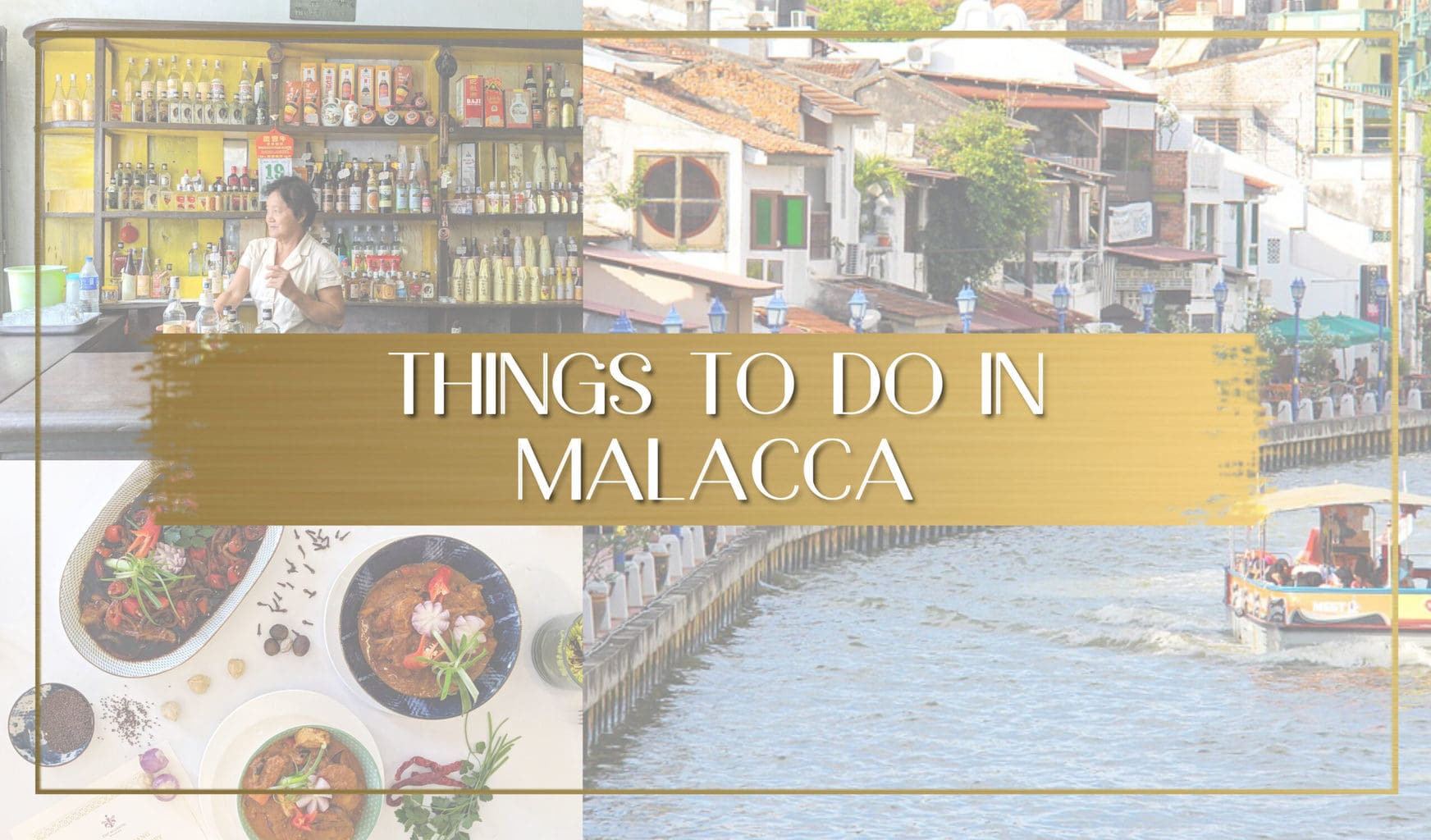
If you’ve ever wondered, what is there to do in Malacca? The answer is LOADS!
Most of the things to do in Malacca focus around its rich and varied history, culture and heritage. From mosques to museums, churches to signature dishes, Malacca is a melting pot of Chinese, Malay, Indian, British, Portuguese and Dutch influences and is filled with gorgeous sights, delicious tastes and unique experiences.
Before getting into the list of things to do in Malacca, it’s always best to learn about its tumultuous history in order to get a better idea of why it is such a special place in Malaysia. And don’t forget to read our guide on 10 Essential Things Travelers Must Know Before Visiting Malaysia.
A brief history of Malacca
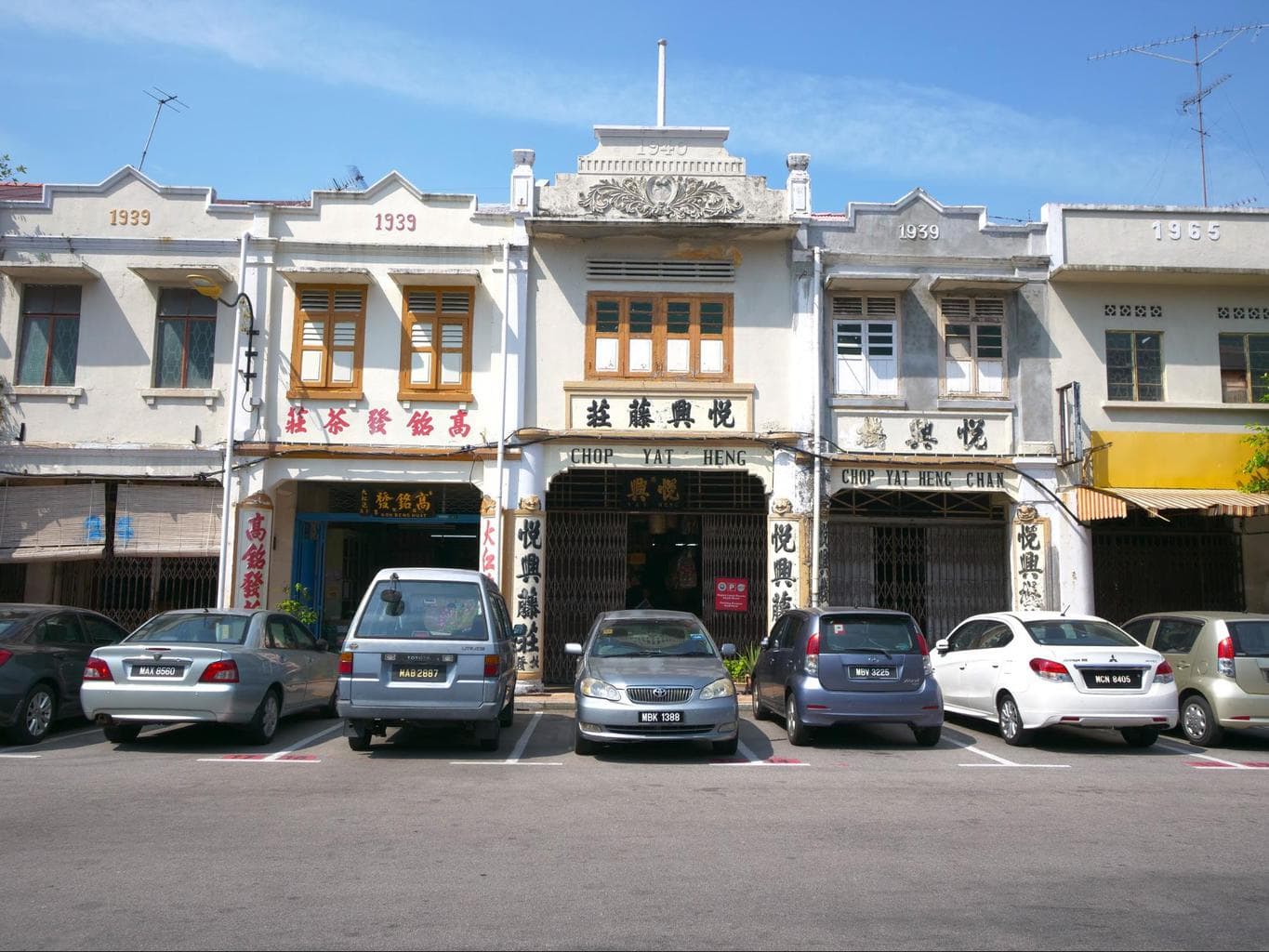
Malacca, also spelled Melaka, has a rich and intense history. It all started as a small fishing village which attracted Chinese merchants and migrants looking for better opportunities. From their inter-marriage with the local Malay women the Baba-Nyonya or Peranakan tradition present in Singapore Malacca and Penang, was born.
Over time, due to its strategic location on the Straits of Malacca, the city became an important stop on the trade route between China and India and gained relevance and notoriety. This only made it a more appealing target to the global powers who wanted to dominate international trade. Before Portuguese colonization in 1511, Malacca was a Sultanate.
The Portuguese controlled this strategic enclave for just over a century until they were ousted by the Dutch in 1640. These, in turn, handed over the control of the city, and its favorable position, to the British in the Anglo-Dutch Treaty of 1824. Malacca became a British colony and remained such until 1946 when Malaysia gained independence, although it was under Japanese control (along with the rest of Malaysia) from 1942 to 1945.
It is this colonial past which makes Malacca such a heritage-rich destination and which contributed to its recognition as a UNESCO heritage listing in 2008. There is no other place in Malaysia that has so much European influence as Malacca. Keep reading to find out all the fun things to do in Malacca.
Things to do in Malacca (including map)
Now that you have a deeper understanding of the city and its heritage, let’s dive straight into all of the most spectacular things to do in Malacca.
Eat, Eat and Eat Some More
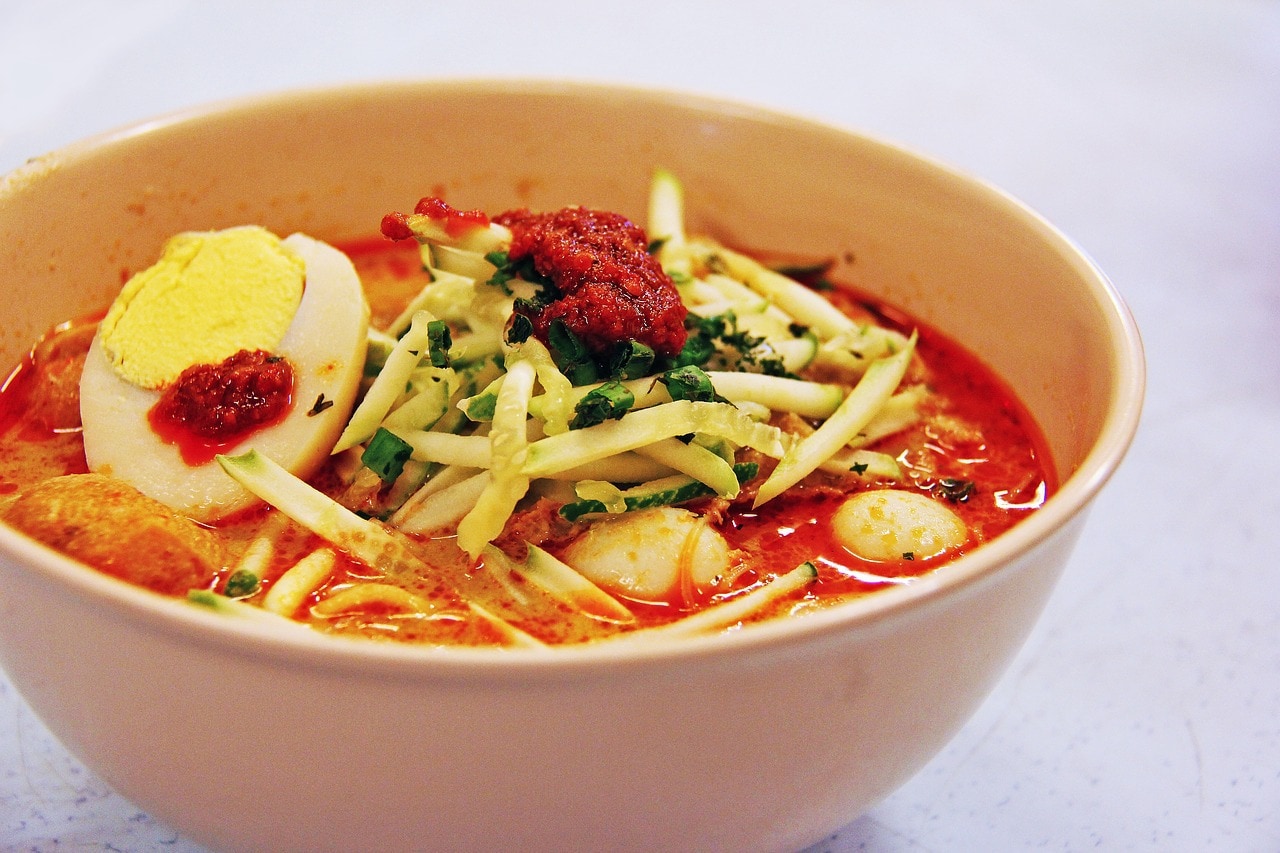
Only those who have never been to Malaysia will not consider eating as an activity. Anyone who has visited will know that eating is a pastime here and is one of the most essential things to do in Malacca.
Malacca may not be as well known for its food as Penang is, but it’s got a lot of exotic food to be proud of. Many Singaporeans and Malaysians come to Malacca for the weekend with the sole purpose of eating, such is the wealth of food options.
Although the area has some Portuguese influence, it’s not anything like Macau food (which shares a Portuguese past) or even other East Asian cuisines like Japan or South Korea. The things to eat in Malacca revolve around the Peranakan, and to a lesser extent Kristang (Malacca Portuguese), heritage.
Let’s start with Nyonya food. This is one of my favorite cuisines and is a fusion of Malay and Chinese food that is as unique as its heritage. You must try assam fish, sambal prawns, kueh pie tee and Nyonya laksa, and cannot leave Malacca without trying chicken rice balls, one of Malacca’s signature dishes. This is like Hainanese chicken rice, minus the rice. Chicken rice balls are cooked in chicken broth with a side of bean sprouts.
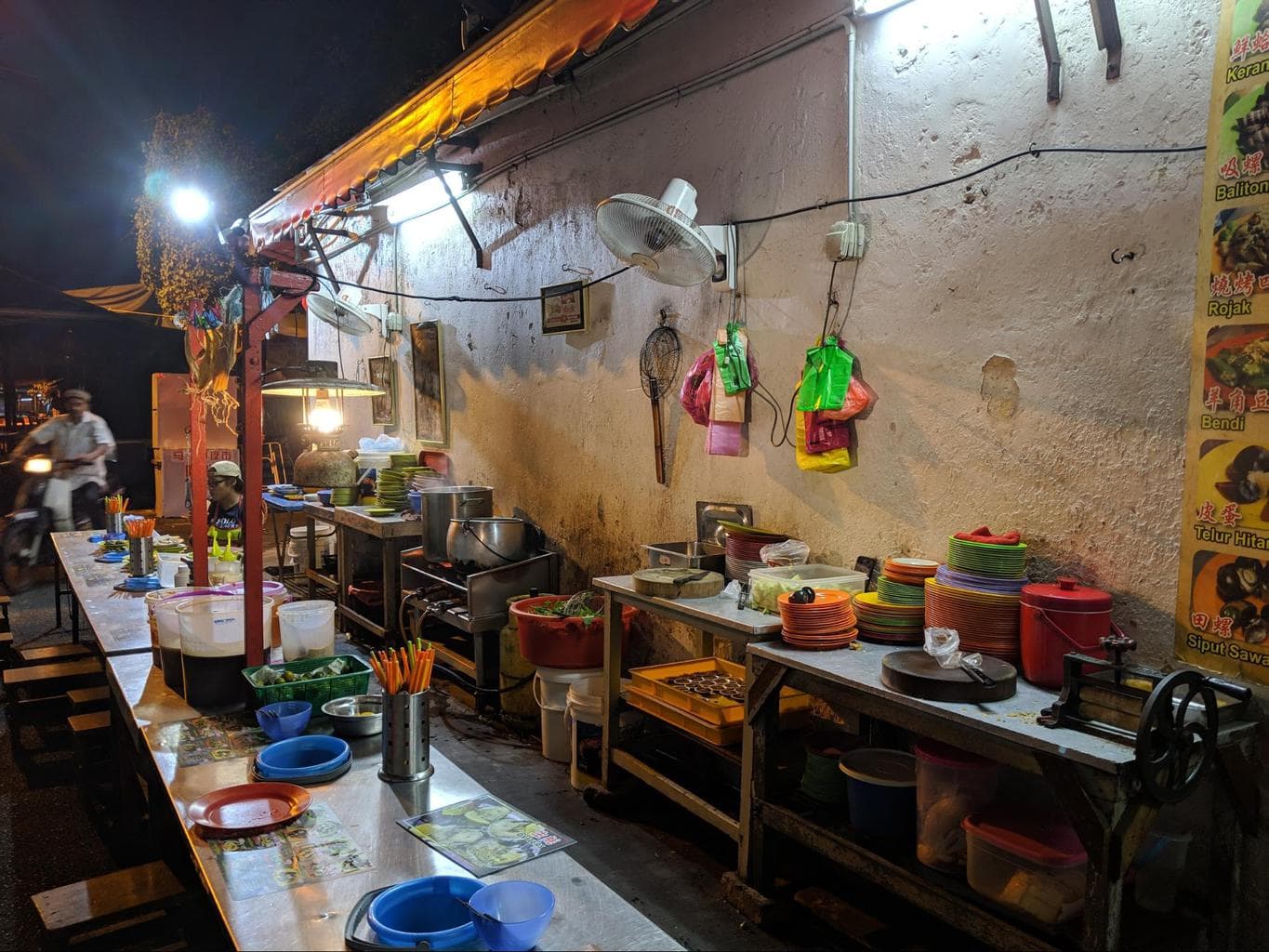
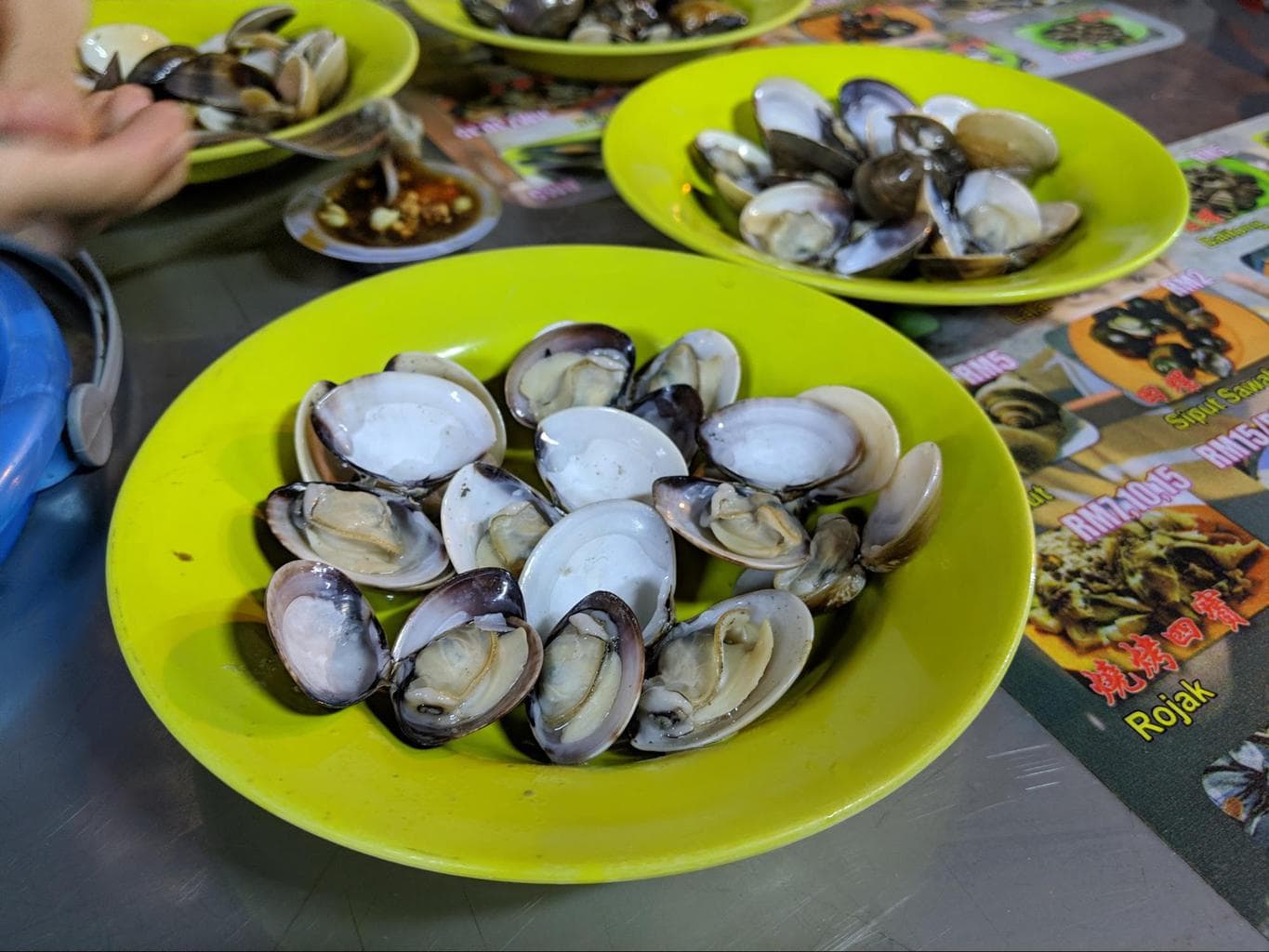
At night there are street food stalls everywhere, but Jonker Street and Jalan Kee Ann are the right places to start. You can nibble as you wander around the area if you don’t feel like having a sit-down meal.
Another Malaysian fave is cendol: shaved ice, hand-squeezed coconut milk, pandan green jelly noodles and gula melaka. It’s unlike any other dessert I’ve ever had and is excellent for cooling down on a hot day.
Lastly, don’t miss the chance to enjoy some rojak, an unusual mix of fruits and savory items, and a plate of made-to-order cockles from “Cockle street” (Jalan Bunga Raya), a dark non-descript alley near the Majestic Malacca Hotel where street stalls serve only this for peanuts at night.
Dutch Square
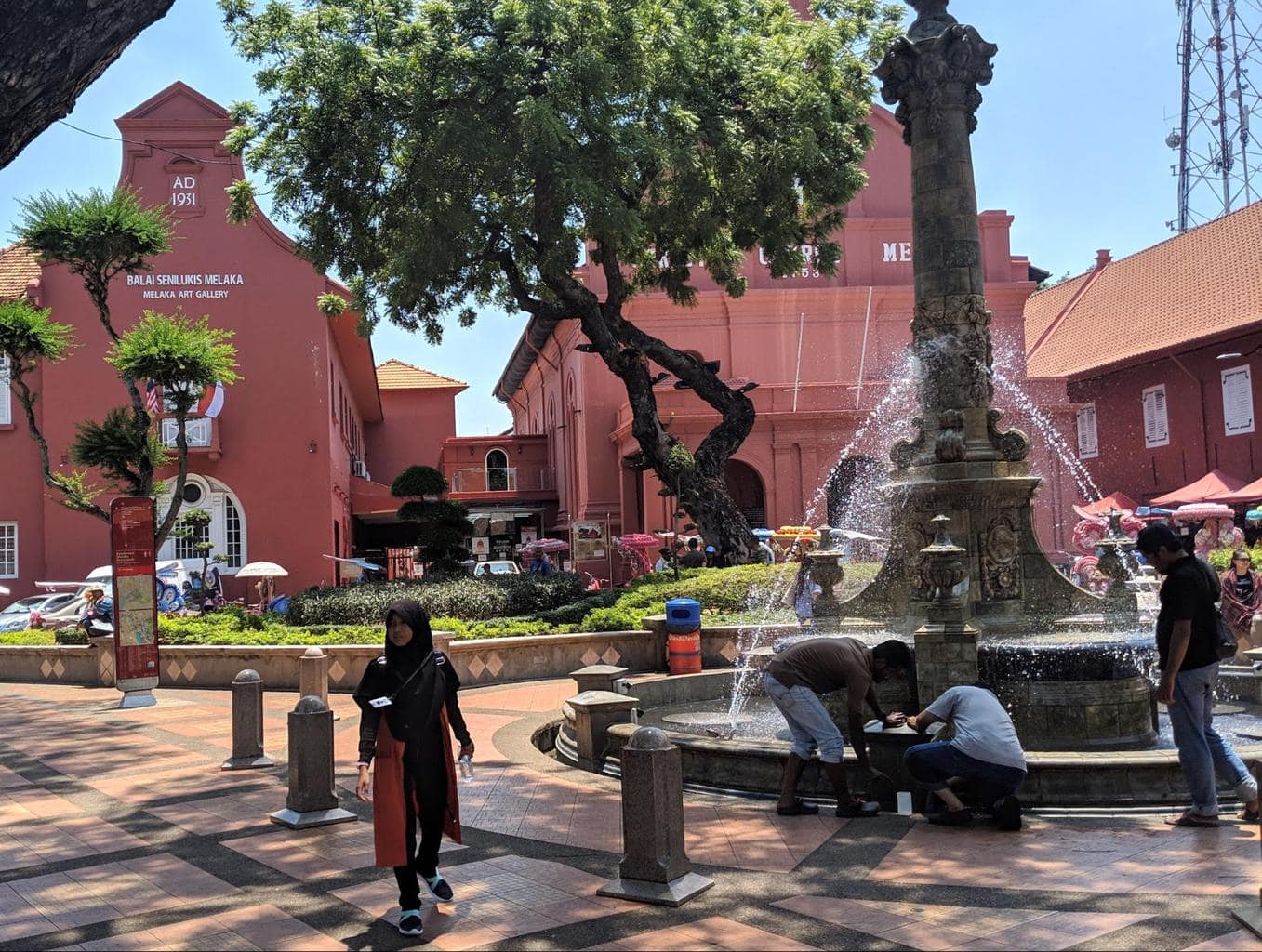
Dutch Square is the perfect place to start going down your list of things to do in Malacca. It’s along the river in the heart of town and is the core historical center. When you see a picture of Malacca, it will probably show one of the classic Dutch red buildings around the square, they are iconic.
The square showcases the 180-year stronghold the Dutch had on Malacca. There are two main sights within the square: Stadthuys and Christ Church. The square was built by Dutch colonists in the 17th century, hence the name. Stadthuys, also known as Stadhuis, was the Town Hall and Governor’s residence.
It is said to be the oldest remaining Dutch structure in the East and is one of the most famous landmarks in Malacca. It is the centerpiece of the square and now houses an ethnographic museum.
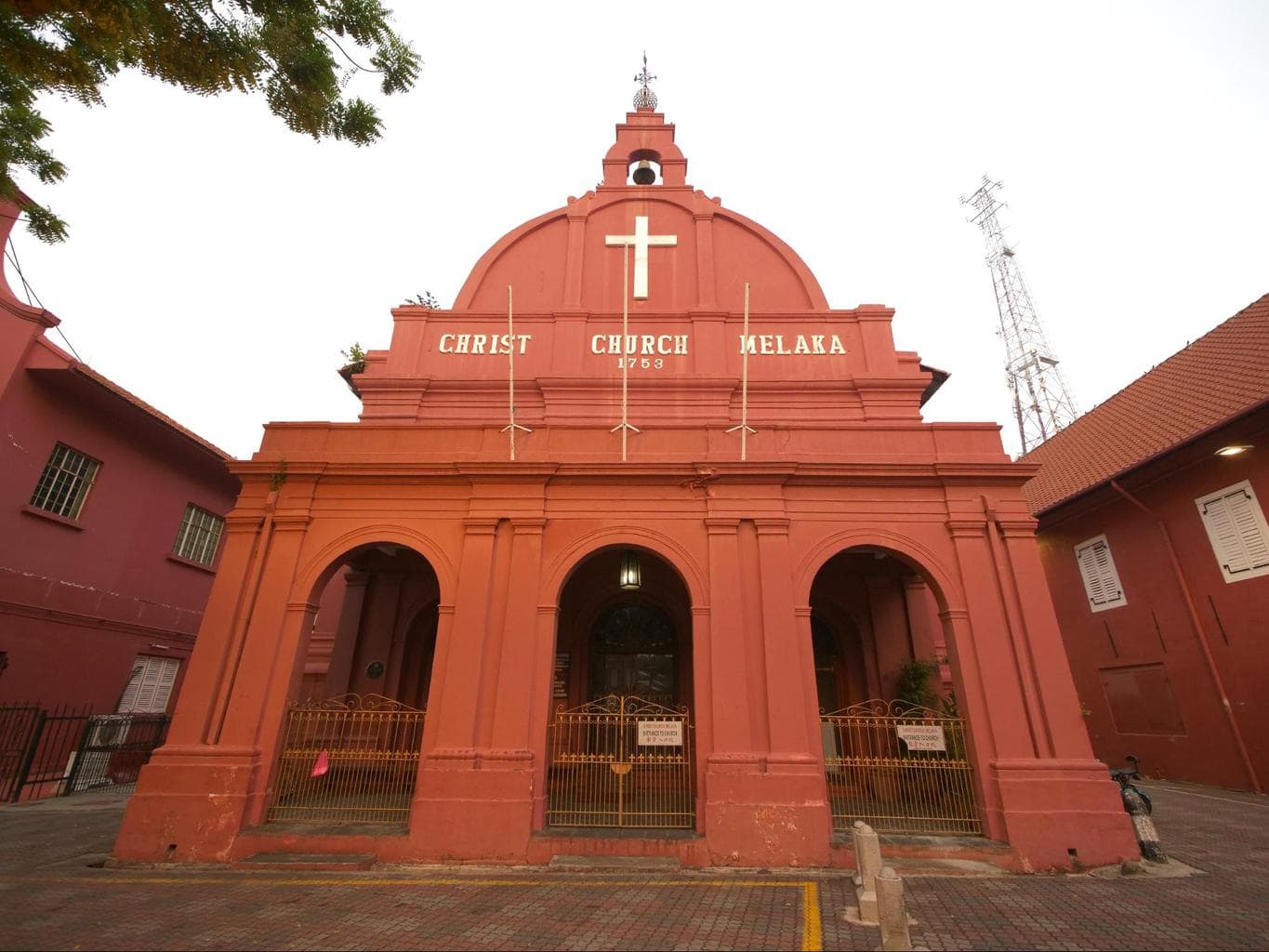
Christ Church, another iconic building with its red façade and big white cross, dates back to the 18th century. It was built on top of the remains of a Portuguese church using bricks that were shipped over from Zeeland, Netherlands.
There are a few unique details to explore in the church: Dutch tombstones along the floor, hand-carved pews and a Dutch coat of arms. This church is the oldest working Protestant Church in Malaysia. There are a lot of Malacca tourist attractions, but Dutch Square is a must!
Cheng Hoon Teng Temple
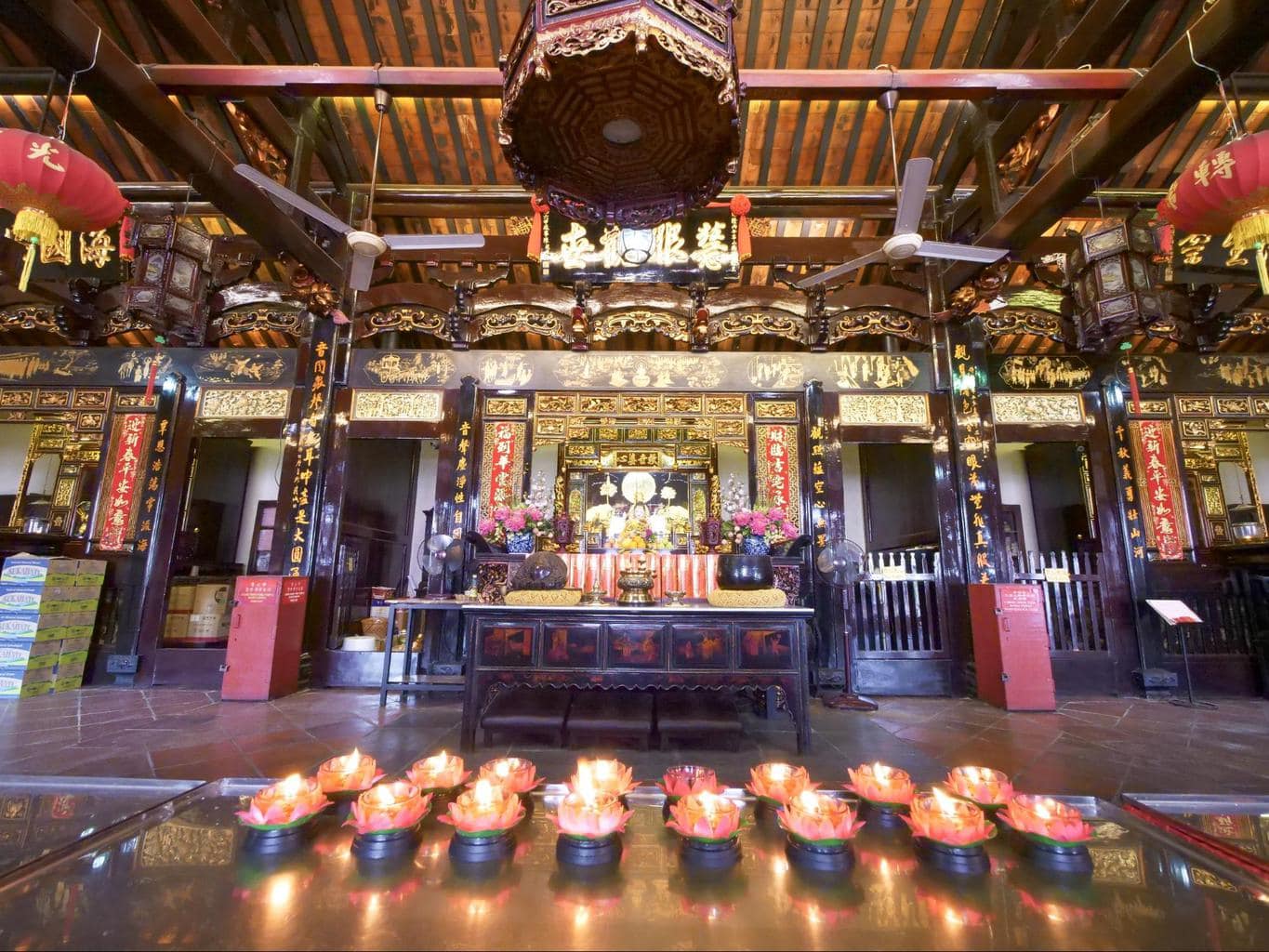
Wander inside this ornate temple that was built in 1646 and is the oldest Buddhist temple in Malaysia. Cheng Hoon Teng Temple was constructed according to the most stringent feng shui principles with a view of the river and hills on either side and it is one of the most popular places to see in Malacca.
The main hall is dedicated to Kuan Yin, the Goddess of Mercy (like the one which gave the name to Macau and Kuan Yin Thong Hood Cho, one of the most beautiful temples in Singapore), but other deities are also worshipped there.
One of the most unique aspects of this temple is that it isn’t solely for Buddhism, Taoism and Confucianism are also practiced there. The temple has been lovingly restored over the years to preserve its intricate details and heritage and it is similar to temples in Singapore’s Chinatown or even Little India in Singapore. See more info on Cheng Hoon Teng Temple here.
Masjid Kampung Keling
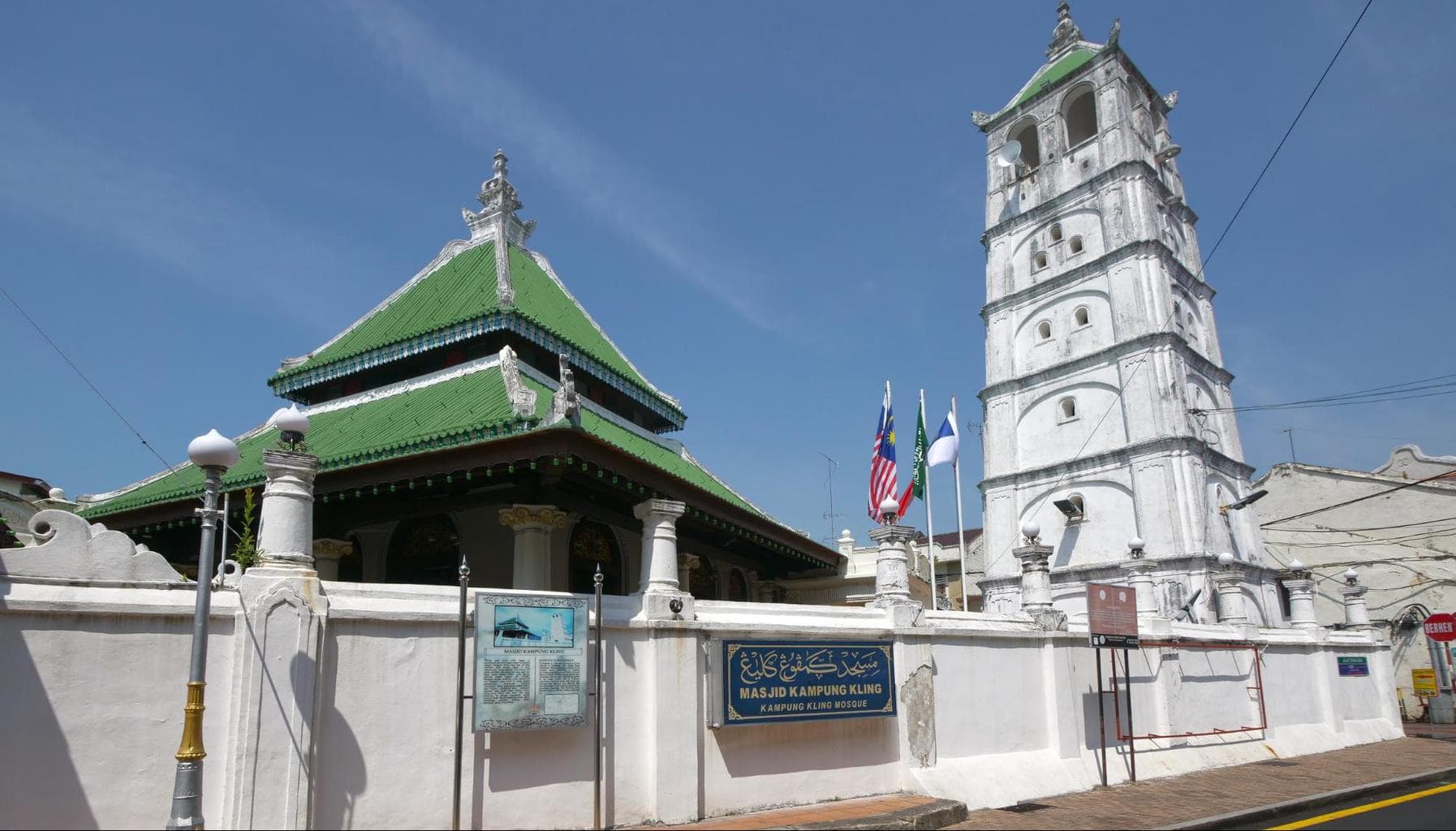
Kampong Kling Mosque, sometimes spelt Kampong Keling Mosque, is an old mosque in Jalan Tukang Emas (Goldsmith, or Harmony, Street) and is very close to Cheng Hoon Teng Temple.
First constructed in wood by Indian Muslim traders in 1748 the mosque was rebuilt in brick in 1872. The most recent conservation works were carried out in the 90s. It’s an impressive structure, not due to its size but rather for its blend of Sumatran, Chinese, Hindu, and the Malacca Malay designs.
On a visit you can see both English and Portuguese glazed tiles blended with Corinthian columns, spot a Victorian chandelier, take a peek at the Hindu and Chinese carvings on the wooden pulpit and glance at the Moorish cast iron lamp-posts. This blend of different influences is a testament to Malacca’s multicultural history.
St. Paul’s Church
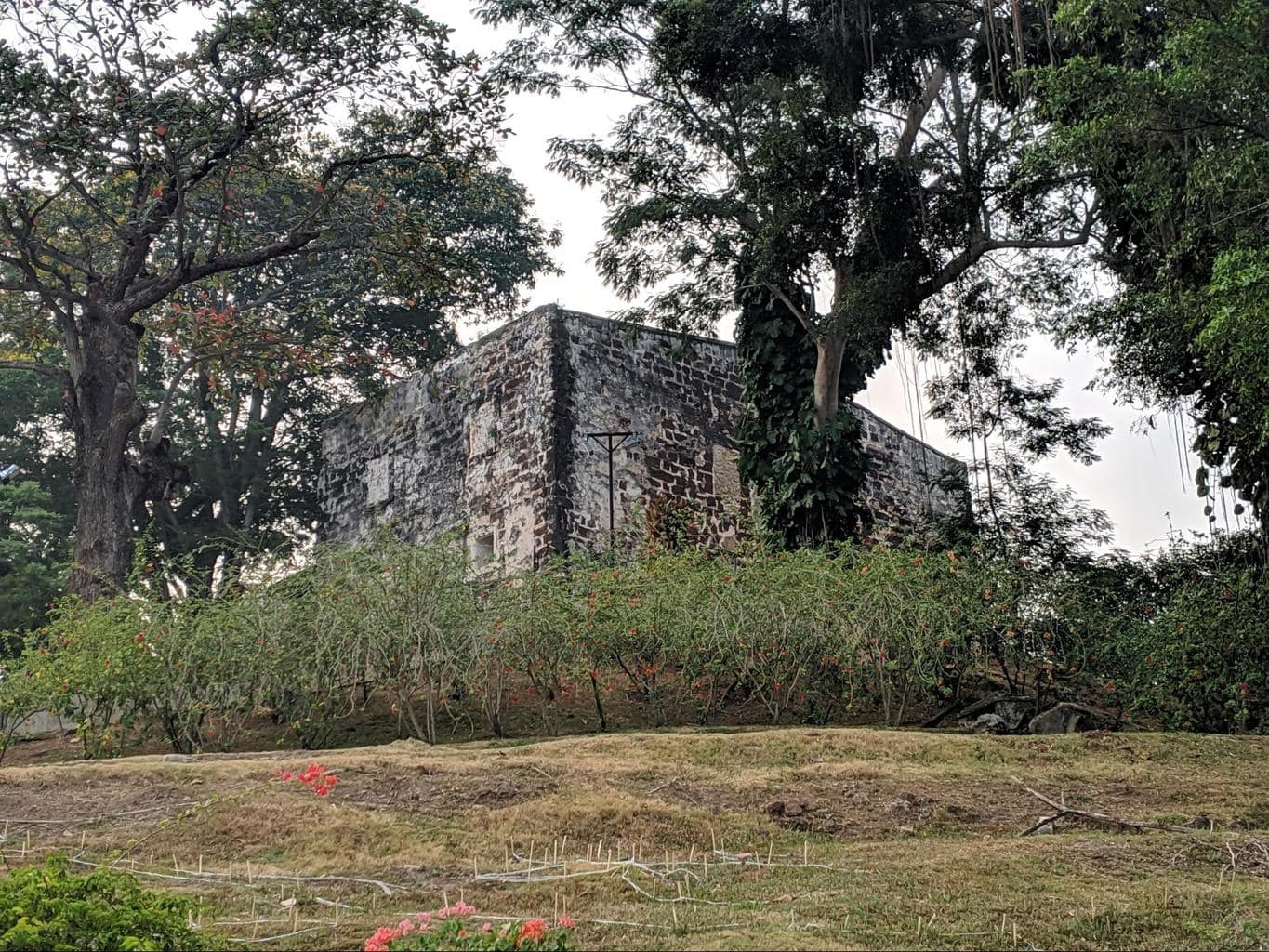
This is another historical site on your list of things to do in Malacca. If you walk up the hill alongside the Stadthuys, you’ll find a set of stairs leading you up to St. Paul’s hill. Walk to the top and you’ll find views of the entire city and Straits of Malacca.
St. Paul’s Church was built in 1521 by the Portuguese. It was initially dedicated to the Virgin Mary and known as Our Lady of the Annunciation. When the Dutch invaded and took over Malacca, they revitalized the church and renamed it St. Paul’s.
It remained in use until Christ Church was completed in Dutch Square in 1753. When the British came, they added a lighthouse and then used it as a storehouse for gunpowder. Sadly the building deteriorated and today only the walls remain but it is still one of the most visited attractions in Malacca and the views are great. Head down the hill and you’ll run into the Porta de Santiago, the gate of the A Famosa Fort.
A Famosa Fort
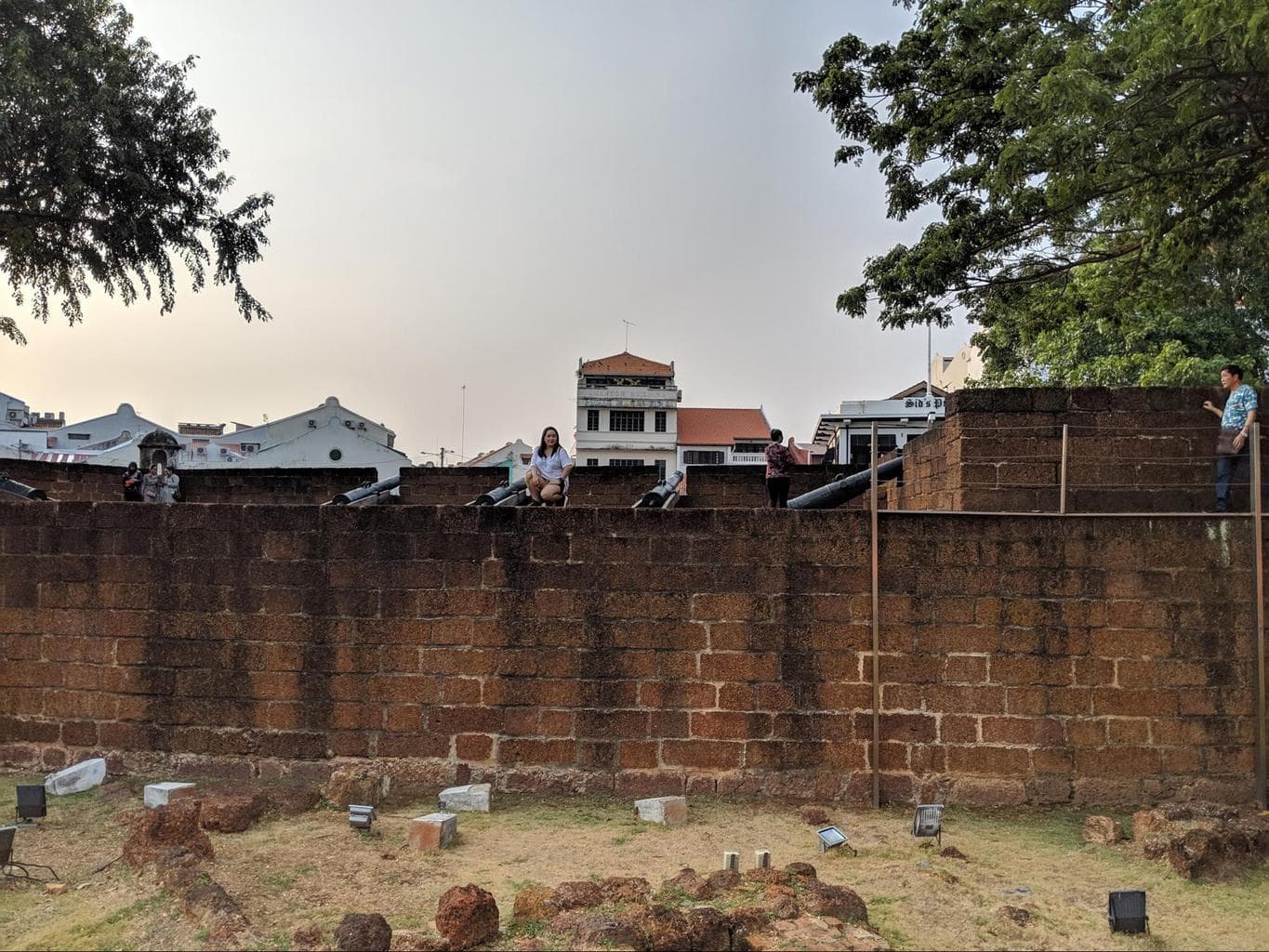
In 1511, Portuguese Captain Alfonso de Albuquerque launched an attack and defeated the Malacca Sultanate’s armies. Once defeated, Albuquerque had to defend his new territory, so he used 1,500 slaves to quickly build A Famosa as a stronghold against other foreign invaders, cheeky, huh?
At one point, the fort housed the entire Portuguese administration (hospitals, churches, stockade, ammunition storage, captains residence and officer’s quarters) and was even expanded in 1586 for the booming Malacca population.
In 1641, the Dutch conquered the Portuguese and drove them out of the city, taking control of the fort. They renovated the fort to Dutch standards adding the Coat of Arms of the Dutch East India Company. Flash forward to the early 19th century and Malacca was conquered again, but this time by the British.
In 1806, the English were scared that A Famosa would fall into enemy hands and ordered it demolished. Luckily, Sir Stamford Raffles (of Singapore fame) was visiting Malacca at the time and stopped the destruction in its final stages. The crumbling walls that remain were saved by Raffles, and more have been excavated over the years.
Baba & Nyonya Heritage Museum
Malaysia has a wide breadth of cultural diversity. Most people only think in terms of Malays, Chinese and Indians. But there are many more ethnicities here dating way back to when Malaysia was Malaya. The Baba & Nyonya Heritage Museum is in a mansion that was converted into a museum in 1985.
Before then, it housed four generations of Baba-Nyonyas, the Chan family. The museum has all the period decorations of old-world Malacca and is like stepping back in time. Take a tour and listen to all the stories about Baba-Nyonya culture and the Chans. The Chans still run the museum, so their stories come alive on the tour. Your guide might even be a Chan.
This was one of my favorite things to do in Malacca. The home is so opulent with its gold-gilded doors and mother of pearl inlaid furniture. It really shows the lavishness of the times for those who had money. More info on the Baba & Nyonya Heritage Museum here
Malacca River Cruise
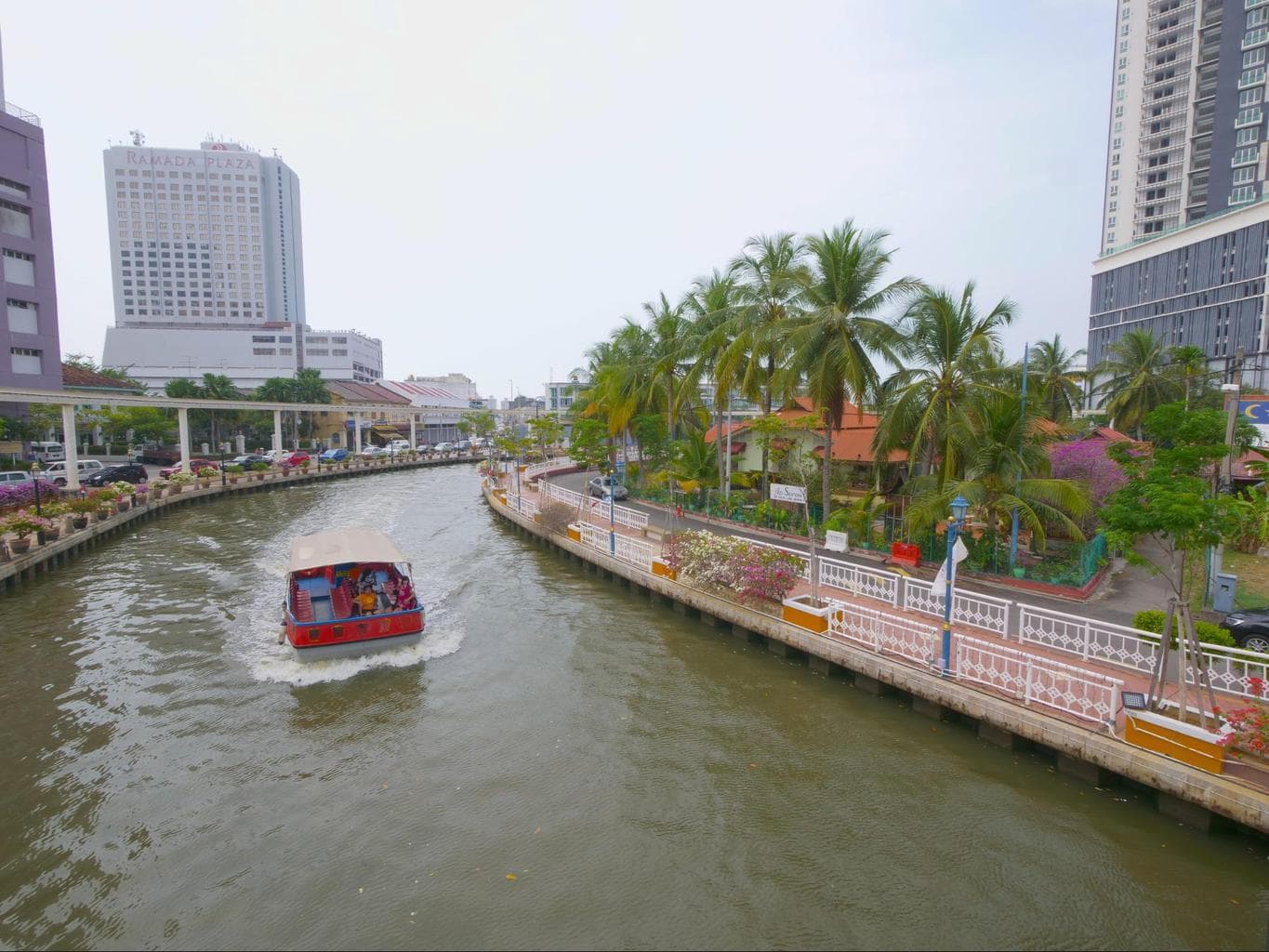
One of the highlights of a trip to the city is the river cruise, it’s a must-do activity in Malacca. The Malacca River runs right through the middle of town. When Malacca was a major port city, the river served as a main thoroughfare for the trade route.
Now the river is lined with charming restaurants and cafes, colorful restored houses, historical buildings, and kampungs. The cruise is only 45 minutes long, but it takes you back centuries. The boat runs all day from 9am to 11:30pm. You can get tickets on the Muara Jetty near the Maritime Museum or online here.
It’s one of the coolest things to do in Malacca at night because you’ll get to see the city light up from a different perspective. I suggest doing it on the first day, right after Dutch Square, because it really gives you an insight into the history of Malacca city. One of the things I loved about it was seeing all the street art lining the river.
Speaking of Street Art…
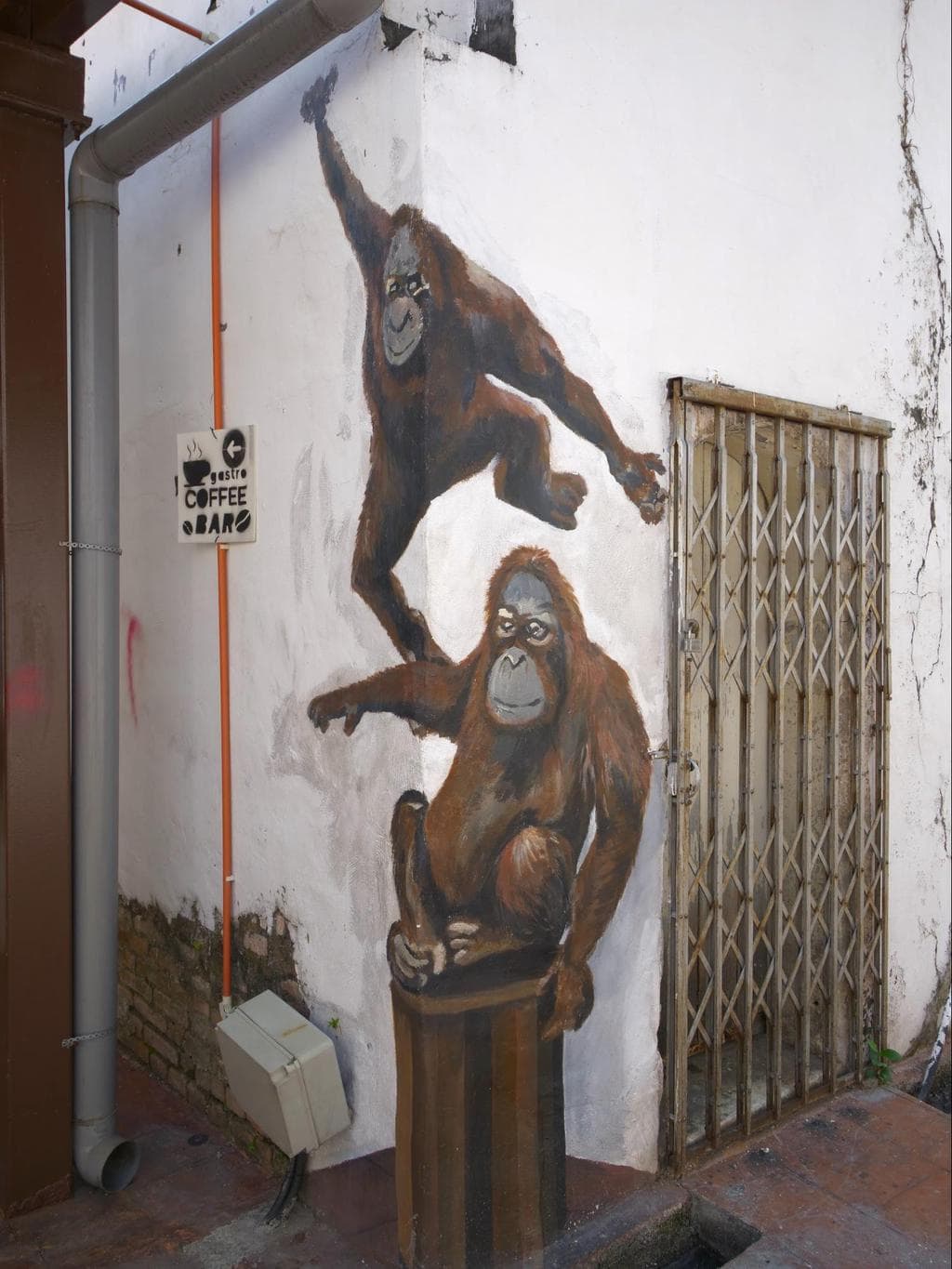
Just like all of Malaysia’s big cities, Malacca has its share of street art. The town is very walkable, so wander around, get lost (if you can) and find the street art. There are a lot of murals along the river, while others are tucked away on side streets.
Some murals are abstract and take up a city block. Others depict scenes from everyday life in Malacca, and others are interactive and just for fun. They generally make for great pictures. Just like all of the most Instagrammable spots in Singapore, this is your chance to capture a few photographic gems.
Ride the monorail
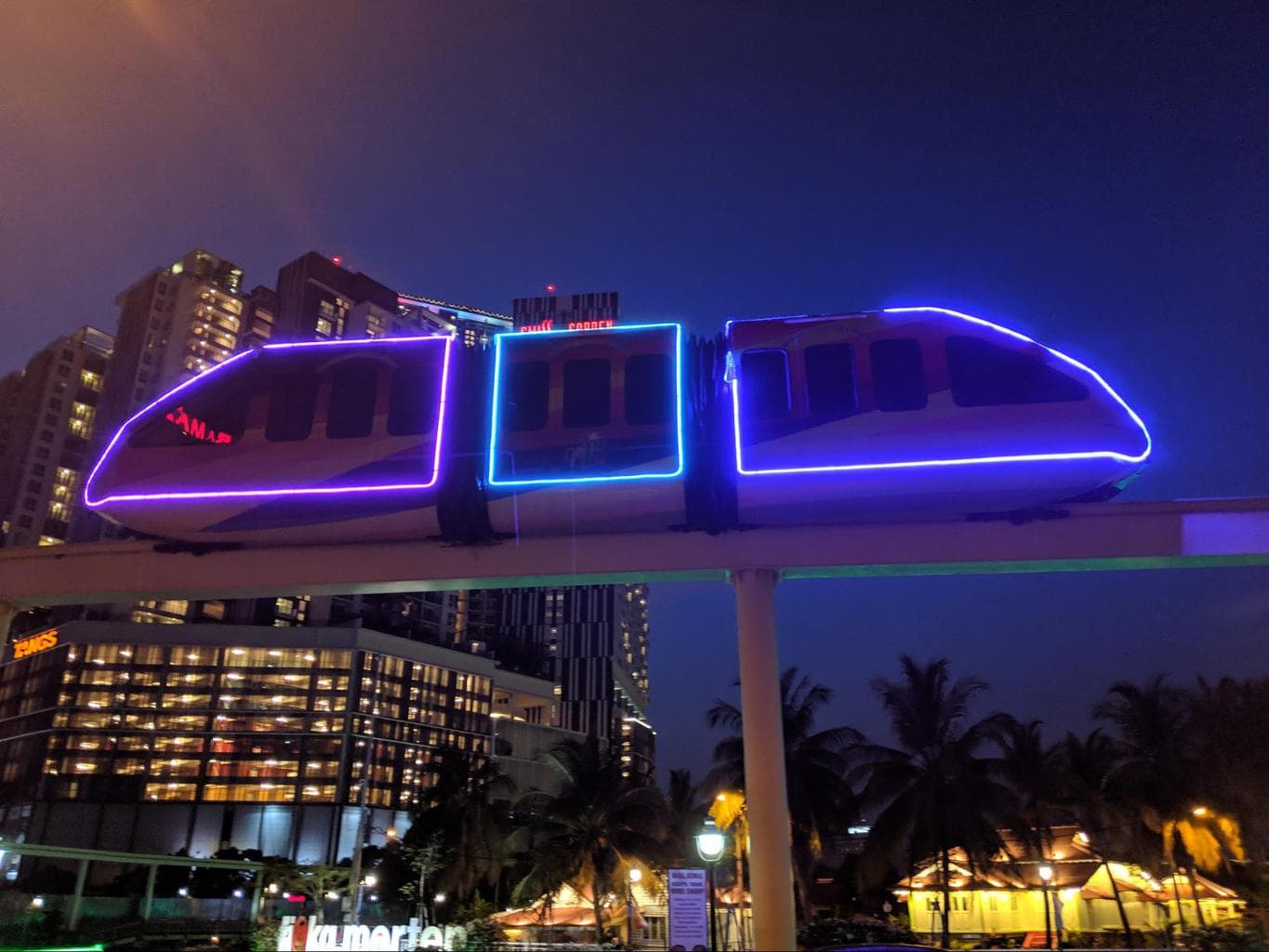
Those wanting to see Malacca from a different perspective can take a bird’s eye cruise on the Malacca Monorail. First opened to the public in 2010 when the system ran a total of 1.6kms, it soon came grinding to a halt, quite literally, within the first few hours of operation. 20 passengers were left stranded inside, but all came out fine.
This culminated in a 7 year hiatus and only started operating again on 4 December 2017. The uni-directional monorail is now complete and runs in a 2.5km circle from Tun Ali Station. It can only fit 15 people at a time and takes around 30 minutes to complete the loop.
The route starts at Tun Ali Station, and then goes over the Melaka River so you can see Jalan Tun Mutahir, Hang Tuah Station, Hang Jebat Station and Jalan Tun Ali, before returning to Tun Ali Station. It’s a fun and insightful way to see the city if you can’t stomach the River Cruise. Operating times are Mon-Thurs 10am-11pm and Fri-Sun (& public holidays) 10am-12am.
Prices differ between Malaysian and non-Malaysian citizens. A standard ticket for a non-Malaysian adult is RM20, Seniors (above 55) RM15 and children (3-12) RM15. Toddlers under 3 ride for free.
Peranakan themed afternoon tea
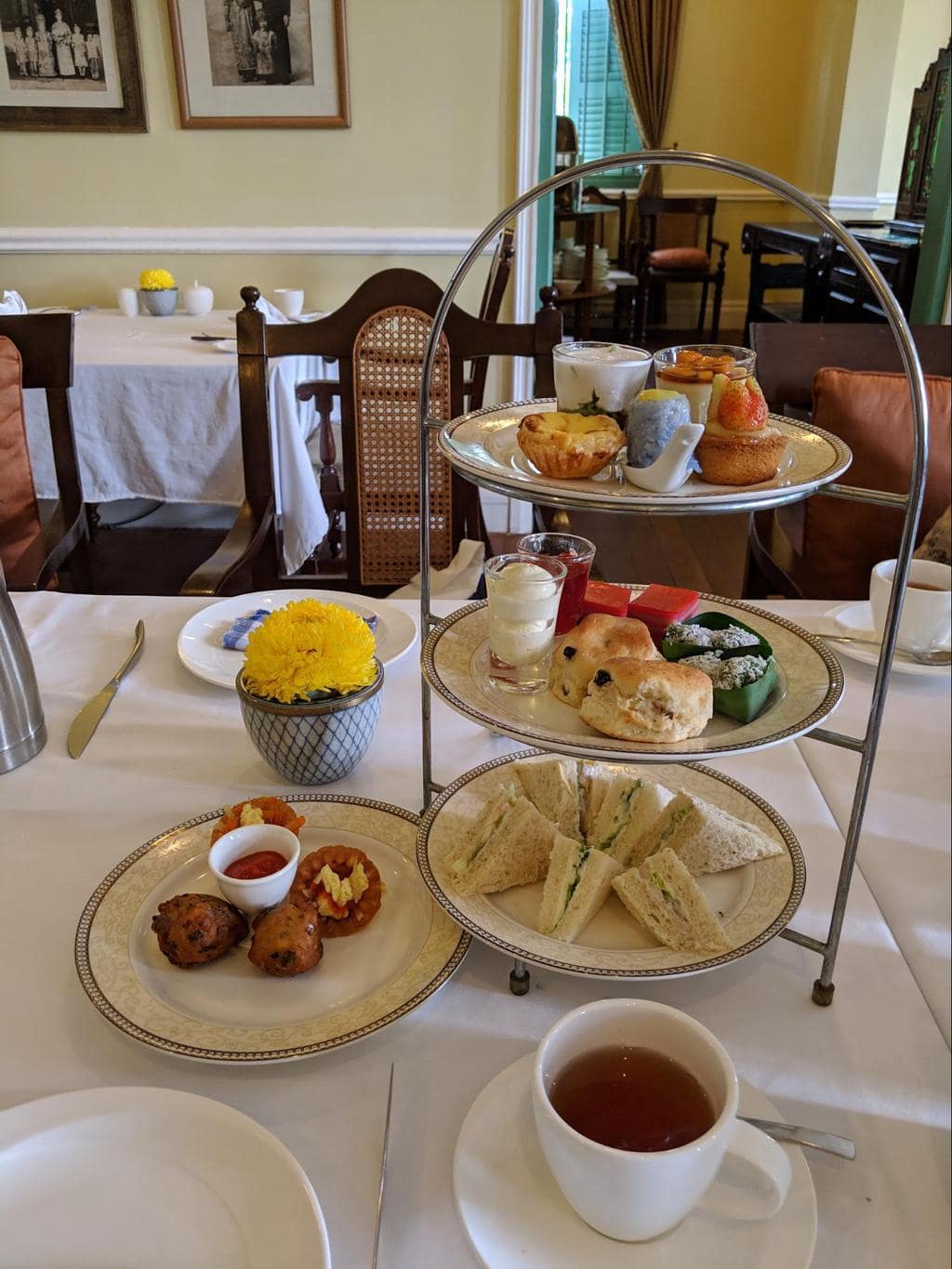
Afternoon tea is a famed British tradition that they brought to the Asian colonies, but you can take it up a notch by upgrading yours to a peranakan version which includes typical Nyonya sweets such as kueh. Most Peranakan sweets are very sweet and made with rice flour, pandan leaves and lots of gula melaka.
They are usually shaped into small balls of square pieces of goodness and come in bright colors. The Majestic Malacca has an afternoon Peranakan themed tea served in their colonial dining room that has all the trimmings. It is a great chance to taste some of these unique sweets in an environment of yore.
Kristang cooking class
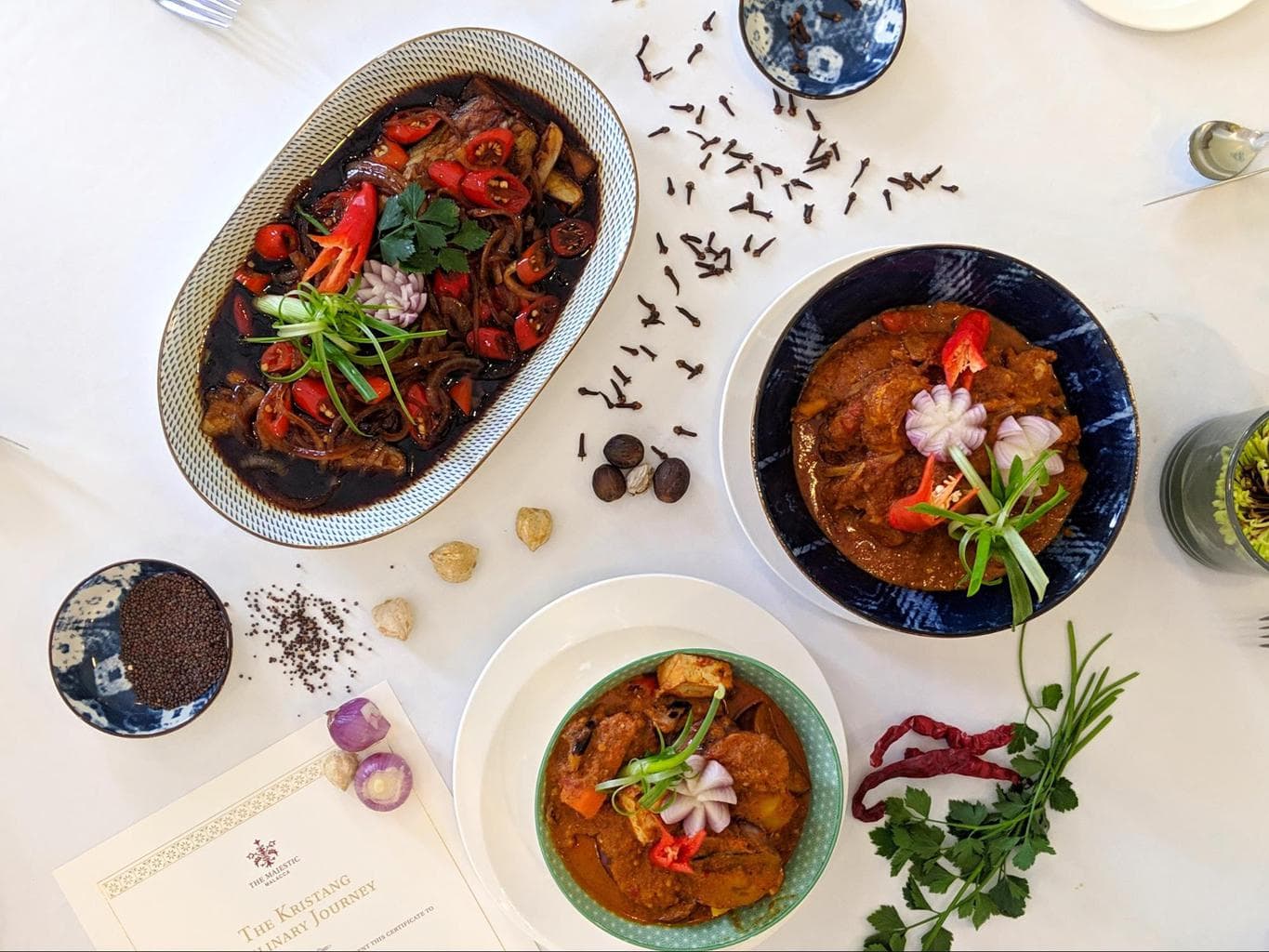
Take your culinary exploration one step beyond Peranakan cuisine with a Kristang cooking lesson, the ultimate expression of Malacca’s world heritage status.
Kristang recipes, often referred to as Eurasian and found only in Malacca, embody the definition of fusion cuisine and amalgamate all of Malacca’s colonial past. The word itself is an evolution of the word for Christian in Portuguese and prepares your palate for what’s to come.
Kristang food is a combination of Dutch, British, Portuguese, Chinese, Indian and Malay traditions and techniques and will surprise you with interesting combinations. Expect hot sambals, lots of chilli, gula melaka, seafood, coconut curries and rice.
You can learn to make some of the best dishes at the Majestic Malacca which is one of the few places in town that serves this type of cuisine and has trained Kristang chefs. The cooking journey starts at the market where you can see some of the unique ingredients in their own habitat.
Have a shot in the morning
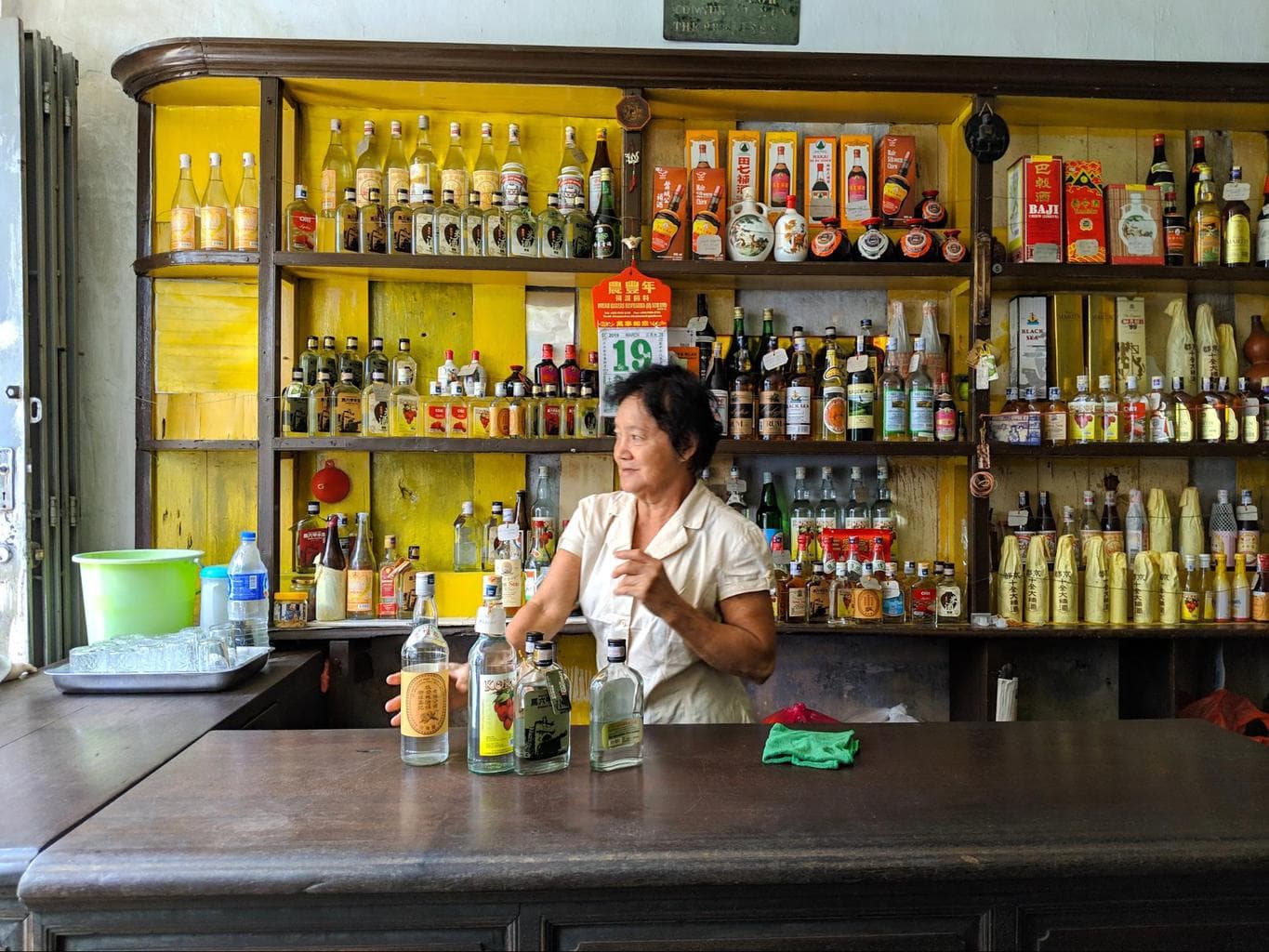
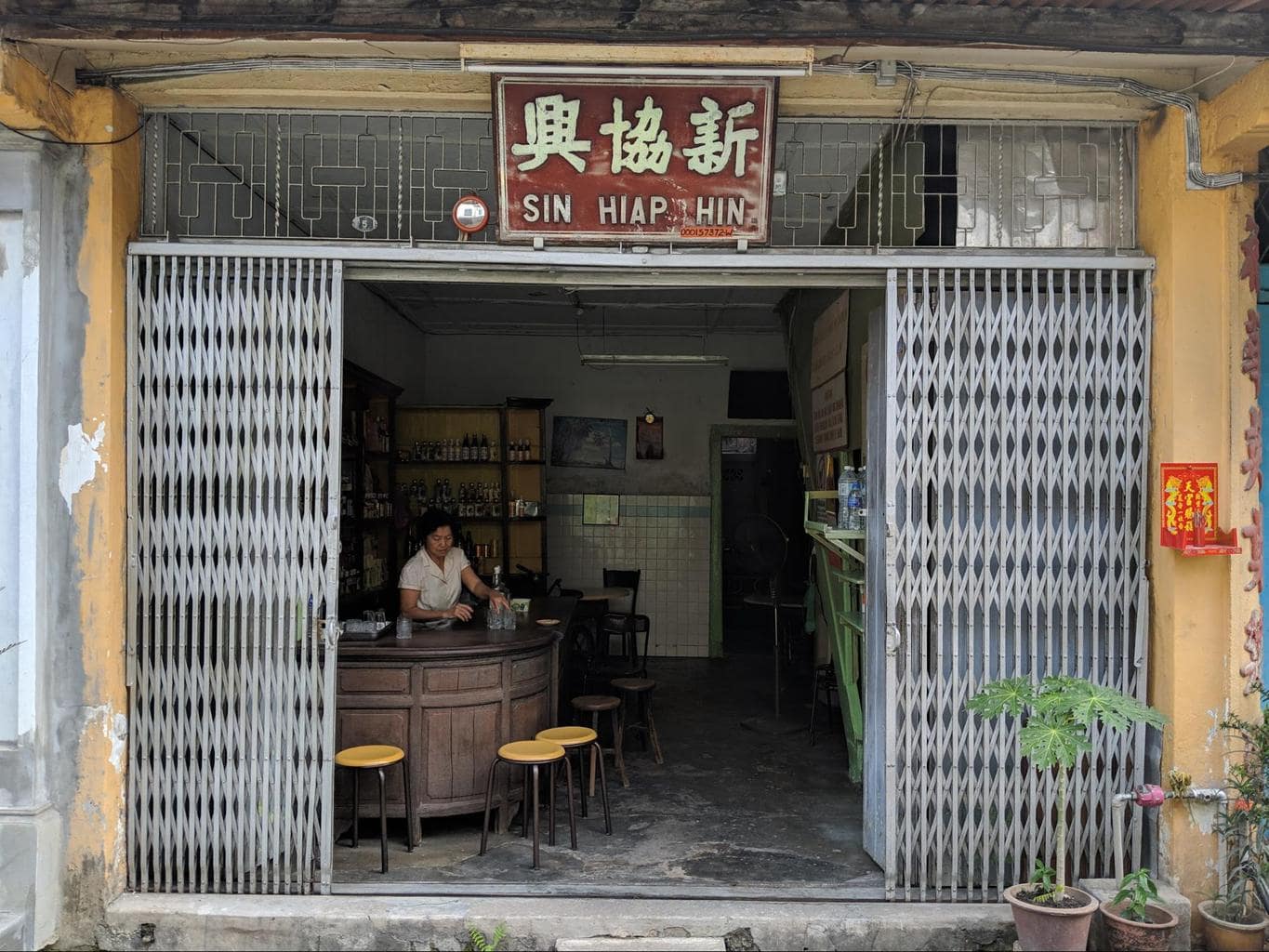
Malacca is a living museum and every single one of its almost pedestrian streets is lined up with hipster cafes, old shops and little gems that profess a rich past. One of these historical examples is a liquor shop called Sin Hiap Hin that opens from 10am to 6pm daily.
This is not a bar in the strict sense of the word, and you won’t find youngsters sitting around and chatting after work, patrons come here simply to drink shots of local spirits served in tiny glasses and over the counter. The old couple who run the place have been doing so for generations and have become an institution.
The wife mans the counter and will let you try half shots of various options, from pandan rum to rose liquor, all are pretty accessible and make for a great kick start to the day, and a good souvenir to take home.
Peranakan beaded slippers
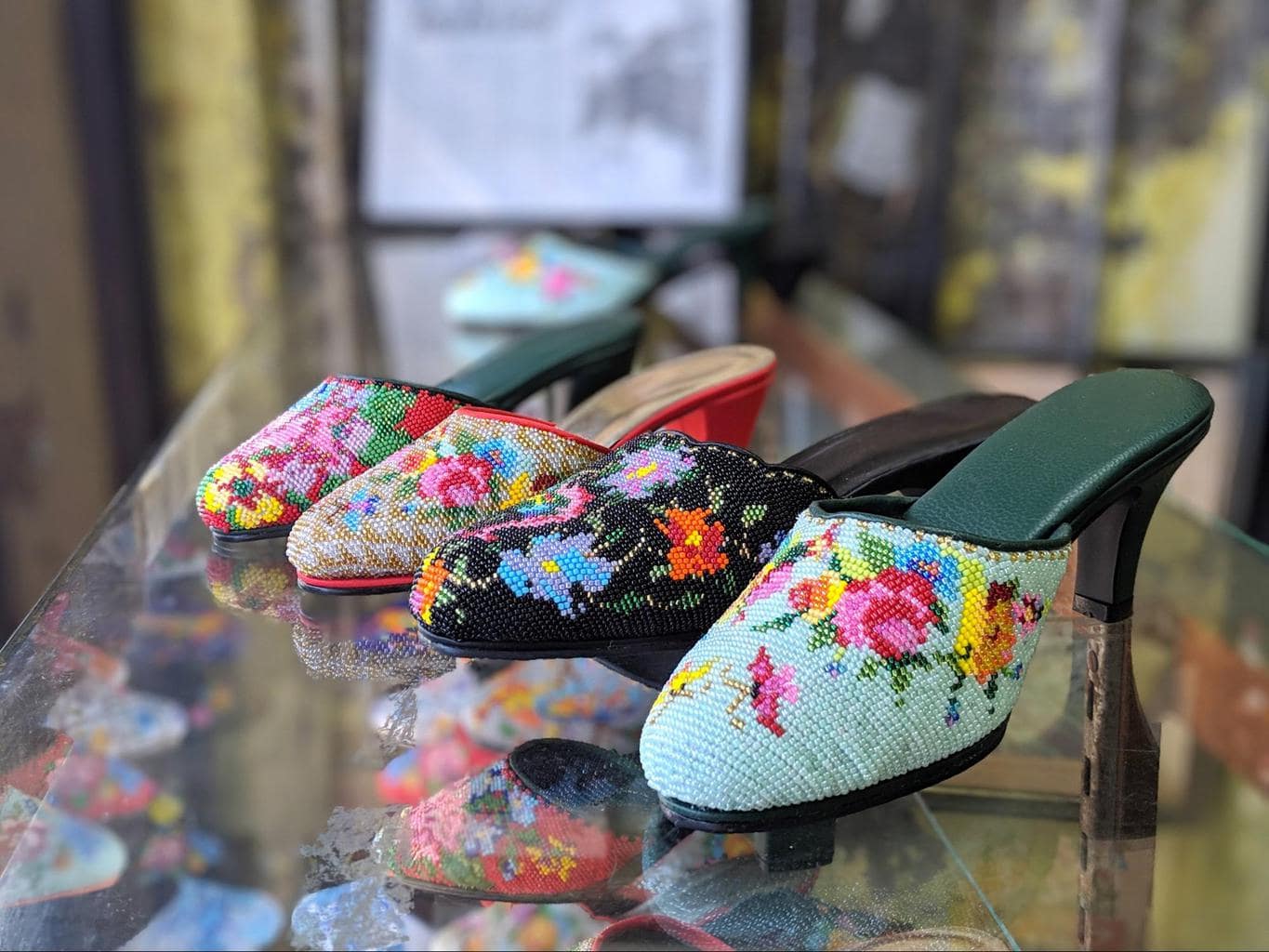
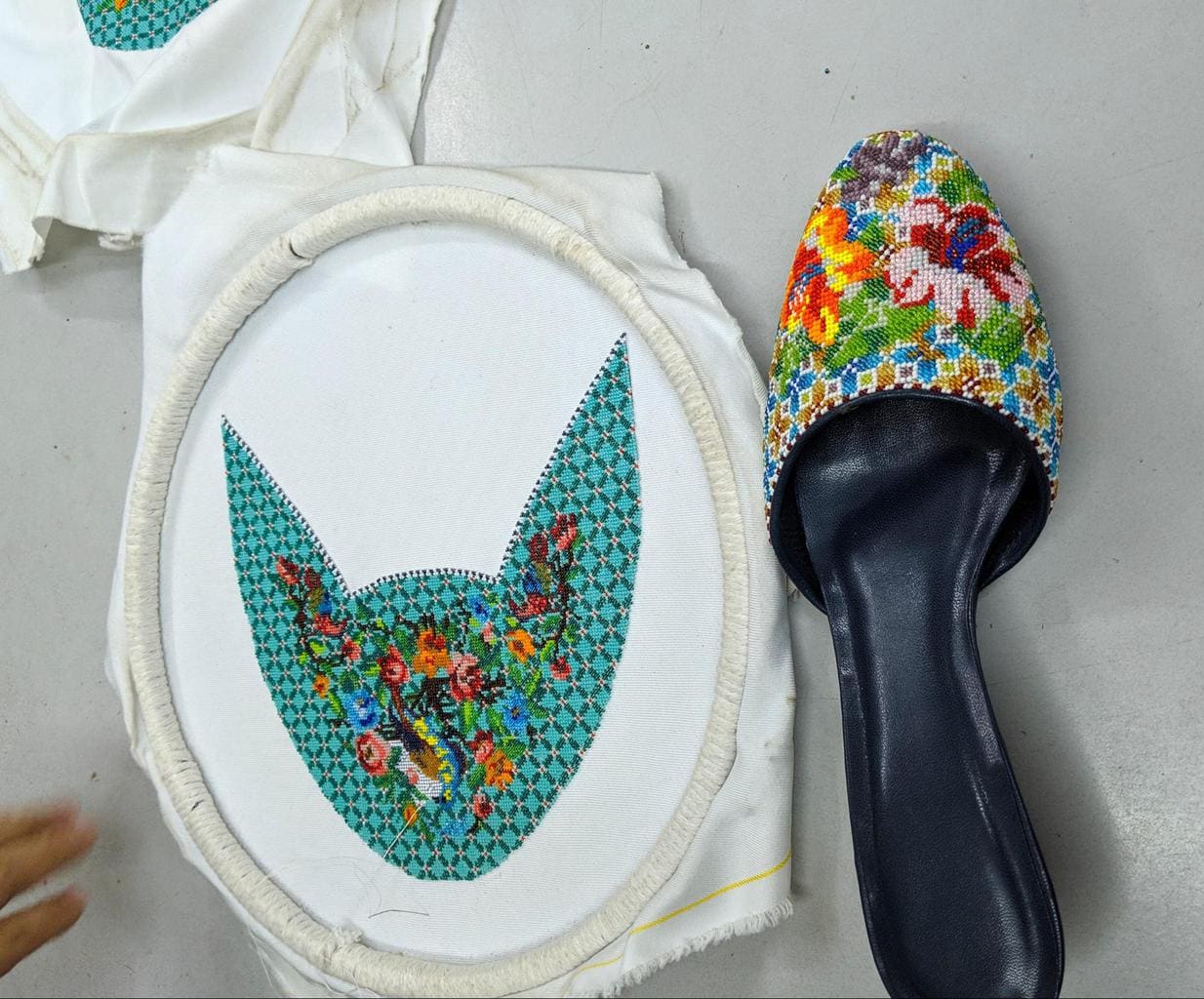
If you have ever flown Singapore Airlines or Malaysian Airlines you will be familiar with their uniforms which emulate the sarongs in traditional Peranakan patterns and colors. But take the note of their shoes.
Historically, these Peranakan beaded slippers were made with beads and not fabric, and were hand stitched and worn on special occasions. Young girls, who mostly stayed home and prepared to be good wives, would hand-stitch these slippers to show their skill and virtue.
Finding these traditional shoes today anywhere is hard; they take a really long time to make and would be expensive if the labor cost was considered. But in Malacca you can find traditional stores owned by artisans that still continue the trade.
The smaller the bead the harder to stitch and the longer the time. Check out Lim trading, a shop that is run by a husband and wife couple who design their own shoes and make them from scratch. The walls are full of newspaper clips from decades prior. Well worth a stop.
Villa Sentosa
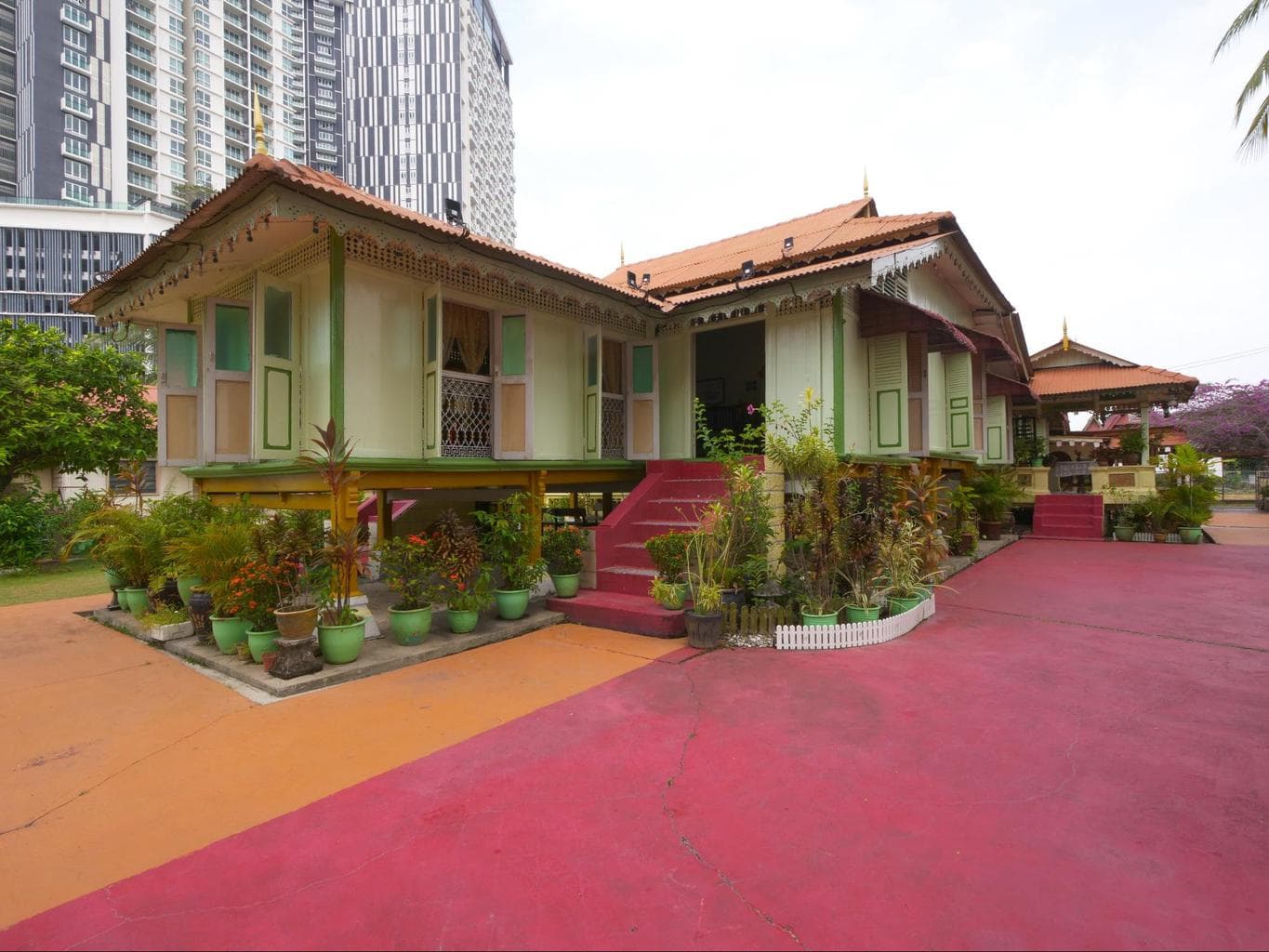
Not to be confused with the man-made entertainment island in Singapore, Villa Sentosa is a living museum where visitors, or guests, can experience kampung life. Situated within Kampung Morten, on the banks of the Malacca River, which has over 50 traditional red-roofed Malay houses.
The area was named after colonial British administrator Joseph Morten, who was involved in the resettlement of the villagers to this area in the 1920s. Also known as The Malay Living Museum, Villa Sentosa is the best preserved of the houses in the area and was turned into a museum.
It’s actually more than just a house and is made up of five interconnected pavilions surrounding an open air courtyard. It’s also raised on stilts and makes use of natural airflow similar to other Southeast Asian countries, notably Cambodia, particularly in the Wild East, but also in Siem Reap.
The guided walk through premises will introduce you to a deep and personal history as told by your guide. You’ll also get to see a range of unique artefacts from vintage photos to antique furniture. Don’t forget to sign the visitor’s book where guests of prominence have been signing their names since the 60s.
Check their official Facebook page for more information.
Jonker Street, also known as Jalan Hang Jebat in Malay
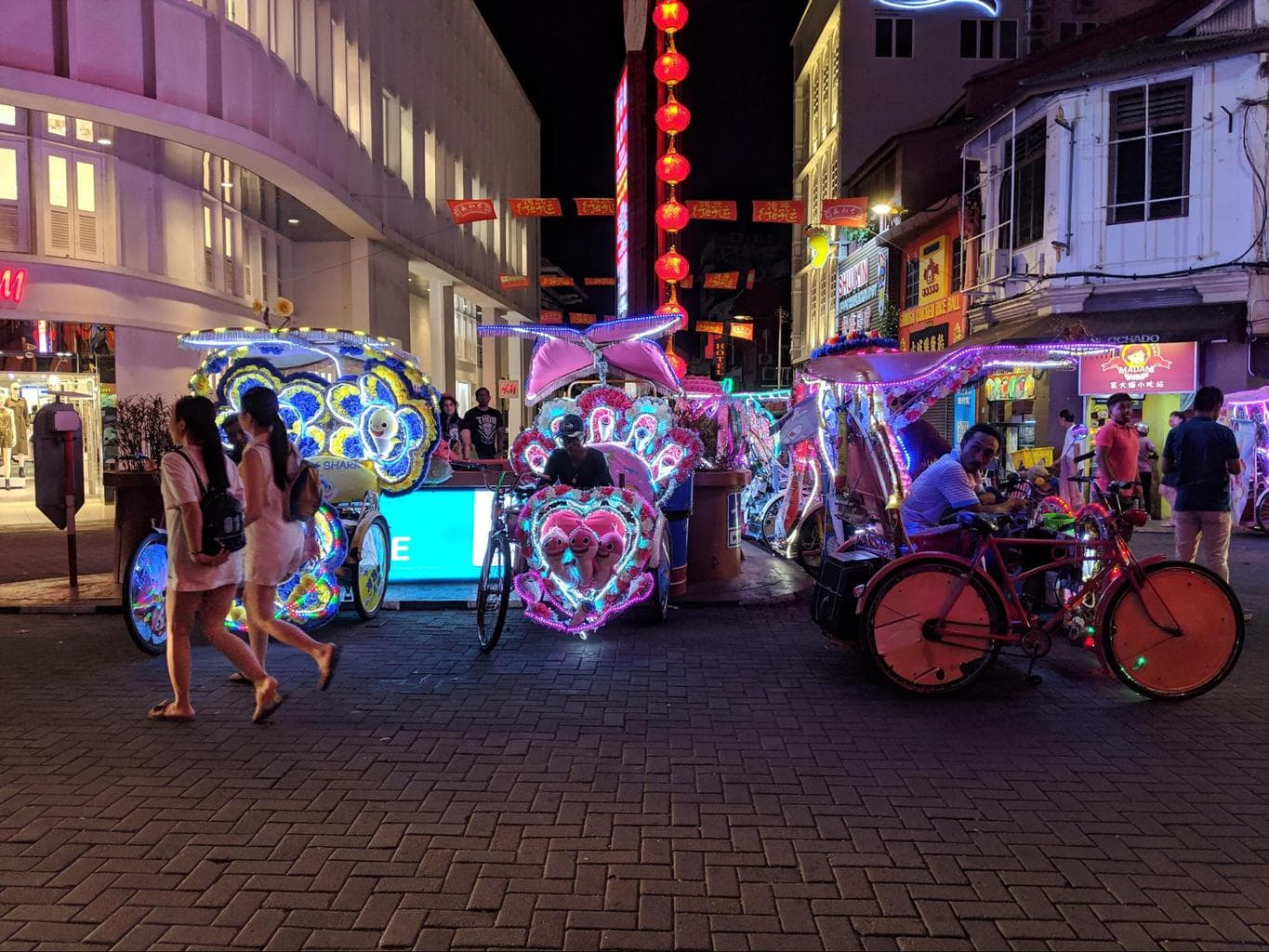
You can’t visit this city without taking a stroll or two down Jonker Street, it’s one of the best Malacca attractions. Jonker Street used to be the residential center of the old city, but now it is a commercial hub filled with all sorts of colorful shophouses and cafes.
During the weekdays, it’s more mellow but still worth a trip because of all the street art and restaurants. Wander around, have a beer, and watch the world go by.
On the weekends, Jonker walk turns into a bubbly street night market with live music, food stalls and a festive vibe. It is definitely one of the most fun things to do in Malacca at night. Jonker Street is also the best place for shopping in Malacca if you want something more quaint than the large malls. You can get everything from vintage books to antiques and local handicrafts.
Malacca Straits Mosque
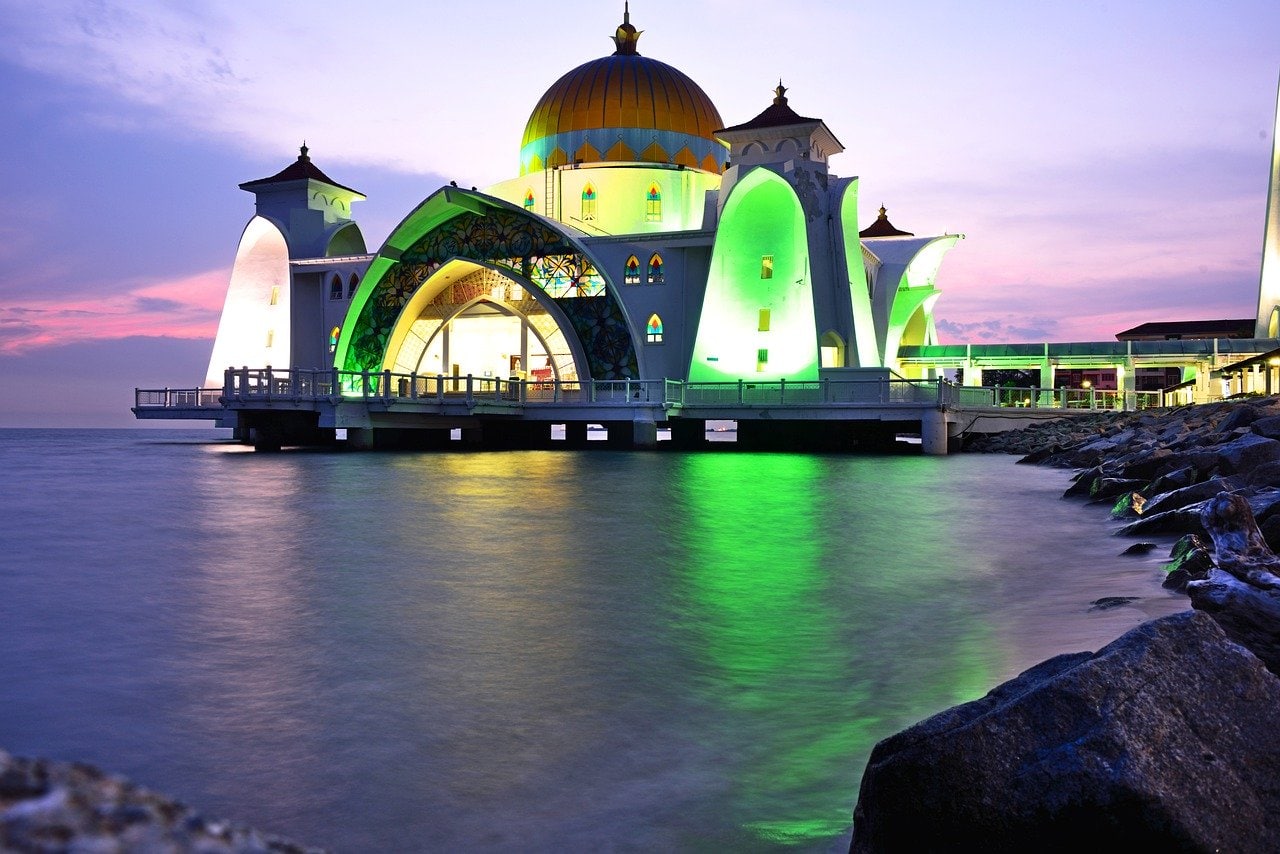
Hop in a Grab and head over to Malacca Island for a peek at the Malacca Straits Mosque. The island is 40 hectares of man-made reclaimed land connected by a bridge to the city. This is similar to Singapore’s Sentosa Island, actually, fun fact about Singapore, 25% of the land is reclaimed!
The gold-domed mosque is built on a platform over the water and when the tide is high, it looks like it’s floating, similar to Masjid Omar Ali Saifuddien in Brunei Darussalam. It’s a modern mosque that blends Malaysian and Middle Eastern architecture seamlessly.
All the archways are paneled with stained glass, and the 30-meter tall minaret is also a lighthouse for ships coming in. The construction of the mosque cost RM10 million. Go in early the morning or at dusk, it’s a really nice place in Malacca for photo ops.
More and More Museums
When you need to get out of the heat, Malacca has a ton of museums to check out and many of them are around the UNESCO-listed area. I could literally write a whole blog on them. There seems to be a museum for everything, but these three are the most important to get a feel for what makes Malacca Melaka.
- The History & Ethnography Museum in Stadthuys provides an in-depth view of the many cultures that make up Malacca. It’s fascinating and packed with information. I did get an information overload there because I went just before closing and was rushed through. I’d suggest going midday so you can take your time. There is a lot of info there.
- The Sultanate Palace is actually a model of the original palace from before Malacca became a colony and is surrounded by manicured gardens. It’s dedicated to the history of Malacca before the Portuguese invaded. It’s more humble than the lavish and over-the-top Sultan’s Palace in Brunei.
- The Maritime Museum is housed in a replica of the Flor de la Mar Portuguese ship that sank off the coast of Malacca. The museum is divided into the eras of Malacca’s history from the Melaka Sultanate period to Portuguese, Dutch, and British rule.
A few quirky Museums: Prison Museum, Kite Museum, Stamp Museum, 3D Art Museum, Beauty Museum, and Toy Museum.
See a mesmerising show
For something that’s as entertaining as it is educational, get flung into the immersive visual and auditory experience Encore Melaka. This 70min interactive show is staged in a 360-degree stage and highlights the culture and history of Malacca. The building itself is quite impressive. It’s an experience for the entire family to enjoy with projection mapping, theater props, traditional and contemporary dance and bright costumes. It really is amazing to see and a brilliant introduction into Malaccan history, if you have the time. Book your tickets online here.
How to get to Malacca
Getting to Malacca is pretty painless from Singapore, as well as the main cities of Malaysia. If you want to get from Singapore to Malacca, your best bet is to drive yourself; that will be the quickest method at around 3.5 hours. If you take the bus, the time depends on how long it takes at the border, traffic, and how many stops the bus makes. The ride is usually about 4-5 hours.
From Kuala Lumpur, Malacca is only a quick 2-hour drive (without traffic) if you have your own car. Otherwise, there are daily buses that will get you there in about three hours. You can book a bus ticket with Bookaway which offers different options from more premium to more budget. From Penang to Malacca, there are daily direct flights that take just over an hour.
Day tour from Singapore or Kuala Lumpur
If you prefer to do things hassle free with a professional guide, you can always opt for a day tour from either Singapore or Kuala Lumpur. Those traveling from Singapore can expect a full and packed day of travel and guided exploration. Your tour will last around 12 hours with a 7:30am start.
While you are picked up from one of three locations in Singapore, your guide will only join you once you pass through customs in Malaysia. The tour is packed with various sites, attractions and activities mentioned in this article. It includes the Stadthuys, the A Famosa fortress, St. Paul’s Church, Jonker Street as well as the historic houses and shops. You also get to have lunch at River Cafe at Del Rio.
You can book your specialised tour from Singapore online right here.
Another option is to take a guided tour of Malacca from Kuala Lumpur if you are already in Malaysia. The tour lasts around 8 hours in an air conditioned van with a knowledgeable local guide.
After exploring sites like St. Peter’s Church, Dutch Square, and A Famosa, you will have lunch in an authentic Malaccan Perenakan Restaurant. With a full tummy you will then head to Portuguese Square (Mini Lisbon) and famed Jonker Walk bazaar.
Pick up is free within a 10km radius from Twin Towers in Kuala Lumpur City Center, but is also available in the outskirts for a surcharge paid in cash to the driver.
You can book your specialised tour from Kuala Lumpur online right here.
If you’re staying in Malacca or want a guided tour with pickup from a different location, try a private Instagram tour of the UNESCO city. Here you will visit all of the most photogenic spots like Putra Mosque, visit Jonker Street, Christ Church, St. Paul Church, Cheng Hoon Teng Temple and the Malacca Straight Mosque. The all-inclusive tour lasts 10 hours and will make you feel like a celebrity.
You can book your Instagram tour of Malacca online right here.
Where to Stay in Malacca
Similar to all the best hotels in Singapore, the places to stay in Malacca include top tier hotel brands as well as restored Peranakan style houses that are unique and boutique. Explore the best places to stay in Malacca with our list of the top Malacca hotels below.
The Majestic Malacca
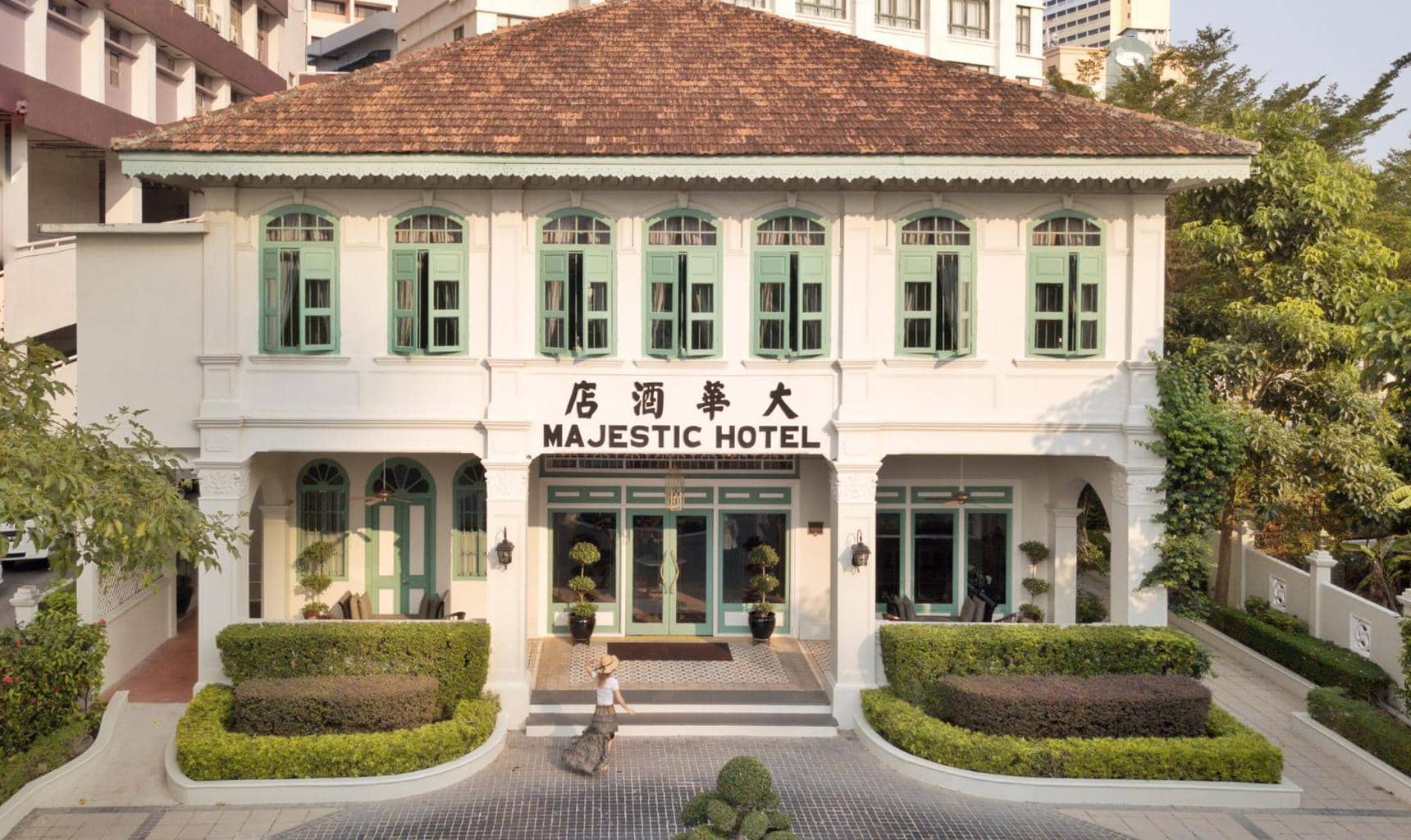
Our top pick of places to stay in Malacca, the beautiful Majestic is located in a mansion dated back to 1920. It’s situated along the Melaka river and gorgeous walkways of red brick Dutch colonial buildings that are over 600 years old.
Hop on a trishaw and explore the area and then come back to one of the most beautiful hotels in Malacca with decorative Peranakan tiles, wooden interiors with mint and cream finishes. Relax by one of the pools, opt for a Peranakan-inspired massage or beauty therapy treatment at Village Malacca, or take a cooking or cocktail class.
Rooms are kitted out in floor-to-ceiling windows, timber flooring and teak bed frames. Hungry tummies can venture to Melba at the Mansion which specialises in Kristang cuisine.
Check latest prices and more photos on Booking.com | Agoda
Casa del Rio Melaka
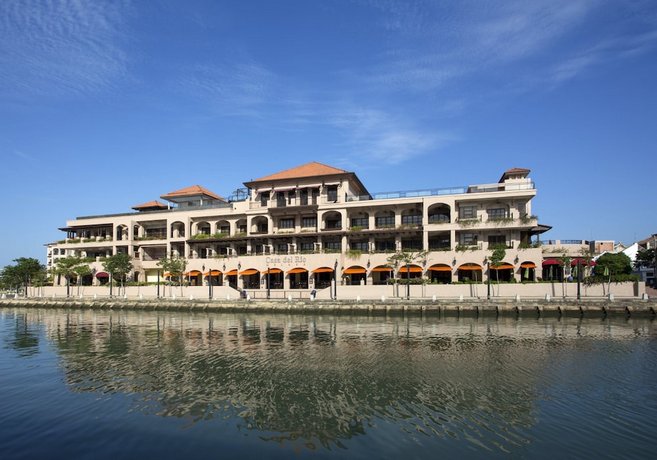
Casa del Rio provides a unique perspective, both historical and visually. The Portuguese architecture built in a blend of stone, stucco and wood provides some colonial insight into the city. The Mediterranean-Peranakan style is amplified by the location, which is overlooking the Melaka River.
You might think you’re in Sicily or Barcelona as you sit on your balcony overlooking the beautiful river. Interiors are regal with a touch of Peranakan chic. You might also wish to use their free shuttle services, coffee bar, infinity pool, beauty centre, sauna, Jacuzzi or on-site restaurant.
Check latest prices and more photos on Booking.com | Agoda
1825 Gallery Hotel
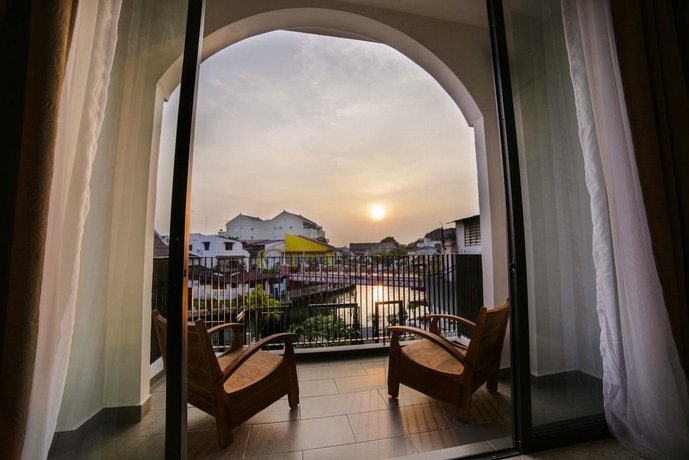
Chic refurbished boutique hotel in walking distance to A Famosa. Once a flour storehouse the small hotel offers a glimpse into the past with nostalgic interiors, artefacts and a sky well that pours light into the central staircase with water feature. Rooms are cosy with modern fairly large bathrooms.
Check latest prices and more photos on Agoda
Courtyard at Heeren Boutique Hotel
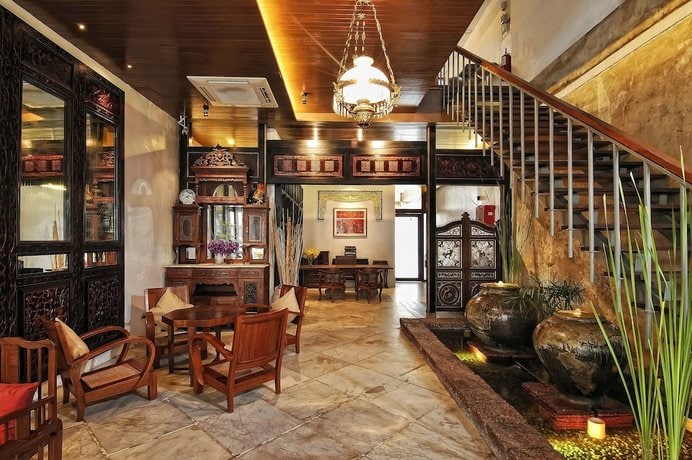
Another fabulous refurbished boutique hotel, Courtyard at Heeren is decked out in the most gorgeous Peranakan and Straits Chinese artefacts from ornate floral tiles to intricate wood carvings. Each room has its own unique style from spiral staircases to bamboo-filled courtyards. The four post beds add a sense of nostalgia and regal authenticity. It’s also a stone’s throw from Jonkers.
Check latest prices and more photos on Agoda
The Settlement Hotel
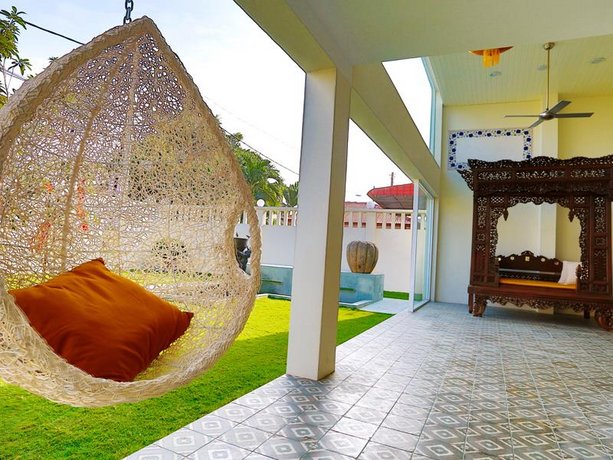
A boutique hotel in Malacca with a twist, you can choose to stay in the residential block (and former government building) or a traditional Malay villa. Chill on the rooftop terrace overlooking the greenery of the city, dip into the outdoor pool or relax at the spa-cum-library.
It’s located slightly out of the town center allows for respite and relaxation. Interiors are what you’d expect for a refurbished Malacca hotel, from rattan ceilings to carved four post bed frames.
Check latest prices and more photos on Booking.com | Agoda
The Sterling Boutique Hotel
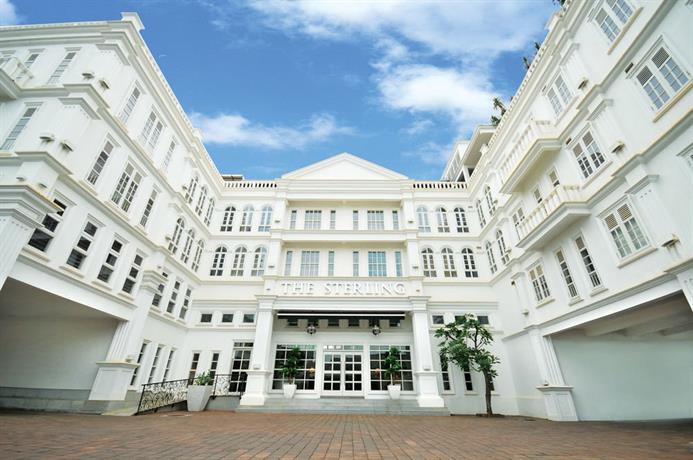
Reminiscent of the famous Raffles hotel in Singapore the all colonial white facade of the Sterling is minimal yet inviting. Choose one of 37 spacious rooms, unwind at the bar or restaurant, or take a 5min stroll to The Stadhuys and Jonker Street. Rooms are minimal, sleek and clean with neutral tones. Some rooms come with either an indoor or outdoor Jacuzzi.
Check latest prices and more photos on Booking.com | Agoda
Gingerflower Boutique Hotel
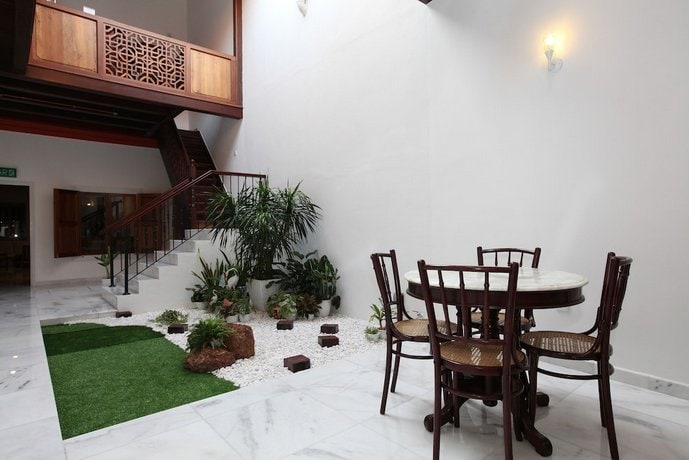
Another wonderfully restored Pernakan townhouse that reminds one of the shophouses of Singapore, Gingerflower Boutique Hotel provides a taste of old Malacca where old-age grandeur is blended seamlessly with modern chic style and amenities.
It’s convenient location is right in the center of the city’s renowned tourism and shopping area, close to Jonker Walk, Dataran Pahlawan and the A Famosa. Get there in style by using the hotel’s limousine service and wake up to a barista-made coffee.
Check latest prices and more photos on Booking.com | Agoda
DoubleTree by Hilton Melaka
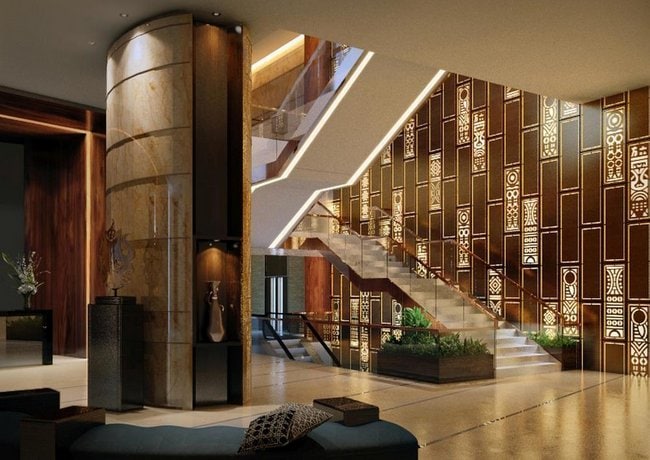
If you’re looking more for a modern business-style hotel, there are a few really nice options. DoubleTree by Hilton is your typical high-tier business hotel with swimming pools, modern amenities, large clean rooms and conference halls. There are desks inside the rooms for work, a rooftop infinity pool overlooking the Melaka Strait for relaxation, two restaurants (Straits Chinese and Italian) to fill you up and a bar for a quiet night cap.
Check latest prices and more photos on Booking.com | Agoda
Hatten Place Melaka & Hatten Hotel Melaka
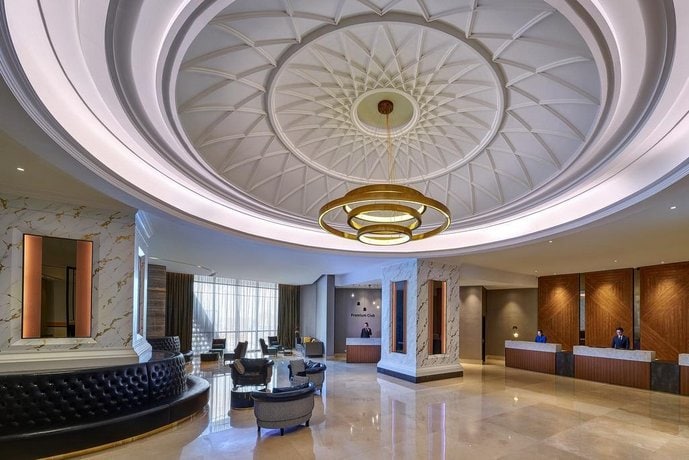
Right next to the DoubleTree and also overlooking the Melaka Strait is family friendly Hatten Place. The hotel has both infinity and kids pools, complimentary internet access, and bicycle rental facilities if getting around on foot sounds cumbersome. Dine at on site restaurant Thyme or have a cuppa joe at Coffeevine. Other amenities include a fitness centre, a sauna and an outdoor hot tub.
Hatten Hotel is a similar option to Hatten Place but closer to all the large shopping malls that Malacca has on offer like Dataran Pahlawan Melaka Megamall, Hatten Square or Mahkota Parade. It’s even linked to Dataran Pahlawan via an indoor air-conditioned link bridge. So if convenience is your cup of tea, then you might want to consider this as your first option. With all the basic amenities including access to H Spa and Gym on 12, this is a great option for families.
Check latest prices and more photos of Hatten Place on Booking.com | Agoda
Check latest prices and more photos of Hatten Hotel on Booking.com | Agoda
Don’t forget to Pin this to your Malaysia Travel board
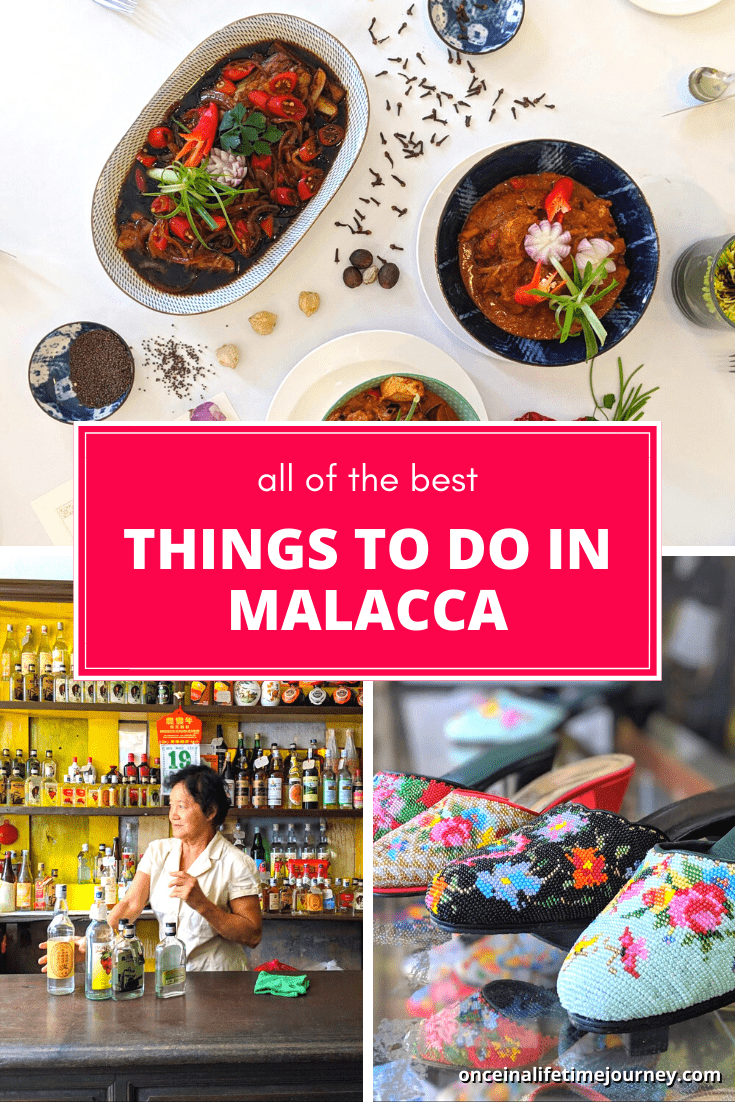
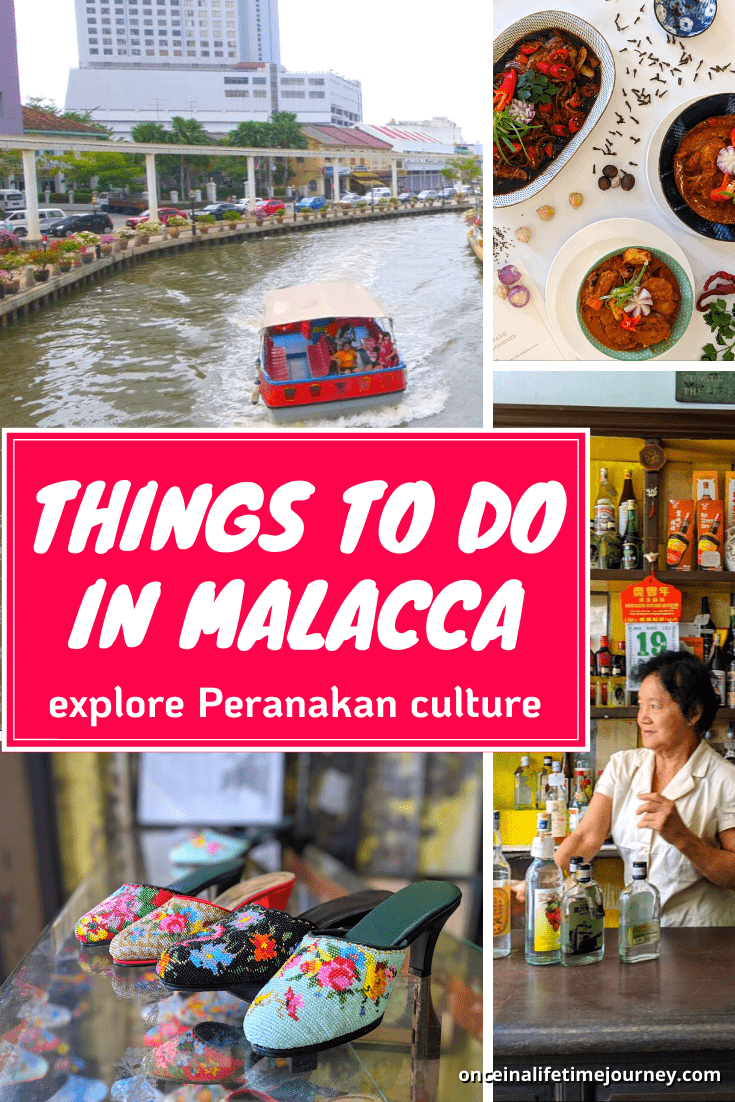
Bio: Hey, I’m Kirsten! I’m an American expat living in Penang, Malaysia. On my blog, Sand in my Curls, I write about the realities of expat life. It’s no vacation – it’s insane, absurd, and laughable, and the best thing I’ve ever done. Check out my blog for info on expat life, a unique perspective on living abroad, and practical travel guides.
- Check if you need a visa, get help processing it at iVisa.
- Never ever leave without travel insurance. Get affordable coverage from World Nomads or long term insurance from Safety Wing.
- I find all of my flights on KAYAK. Check their Deals section too.
- Search for all your transportation between destinations on the trusted travel booking platform Bookaway.
- I book all my day trips and tours via GetYourGuide, they are the best and their tours are refundable up to 24h in advance.
- Get USD35 off your first booking with Airbnb.
- Compare hotels EVERYWHERE at HotelsCombined and book with Booking.com.
- Compare car rental prices at Rentalcars.com
